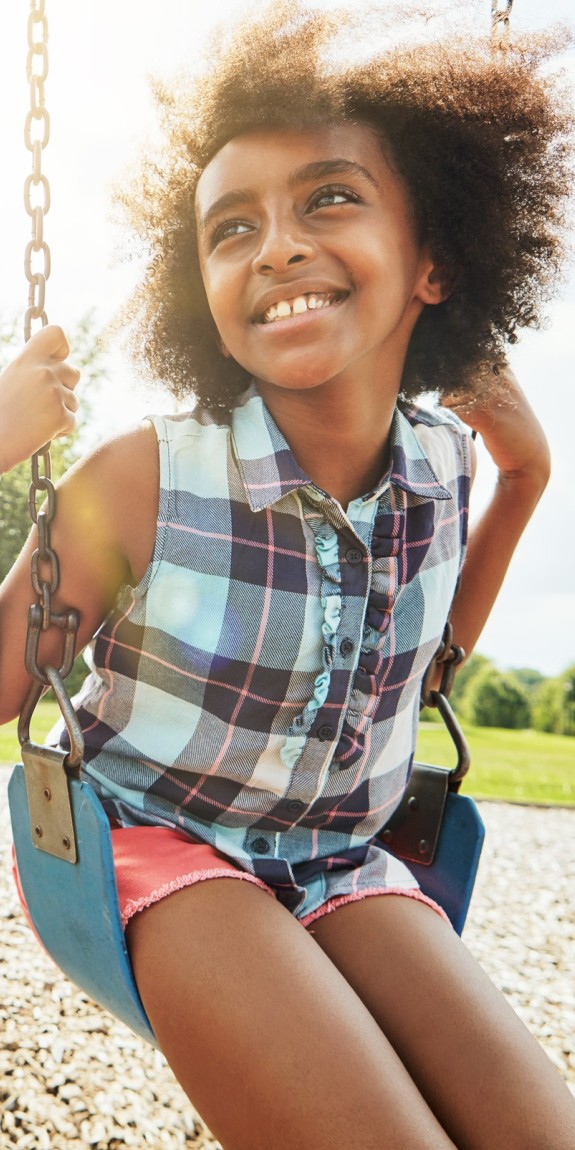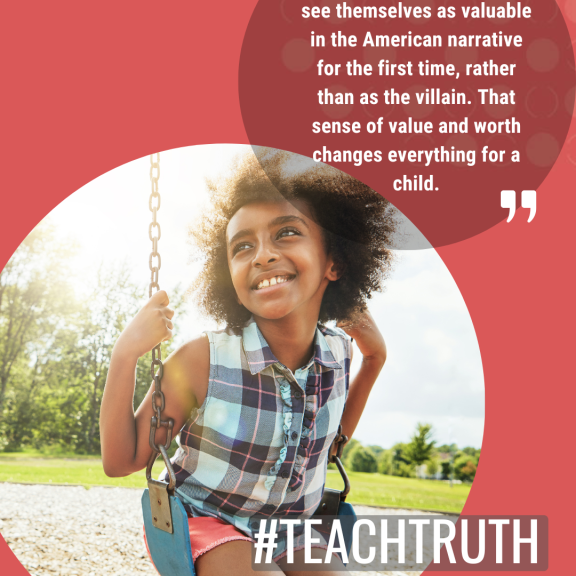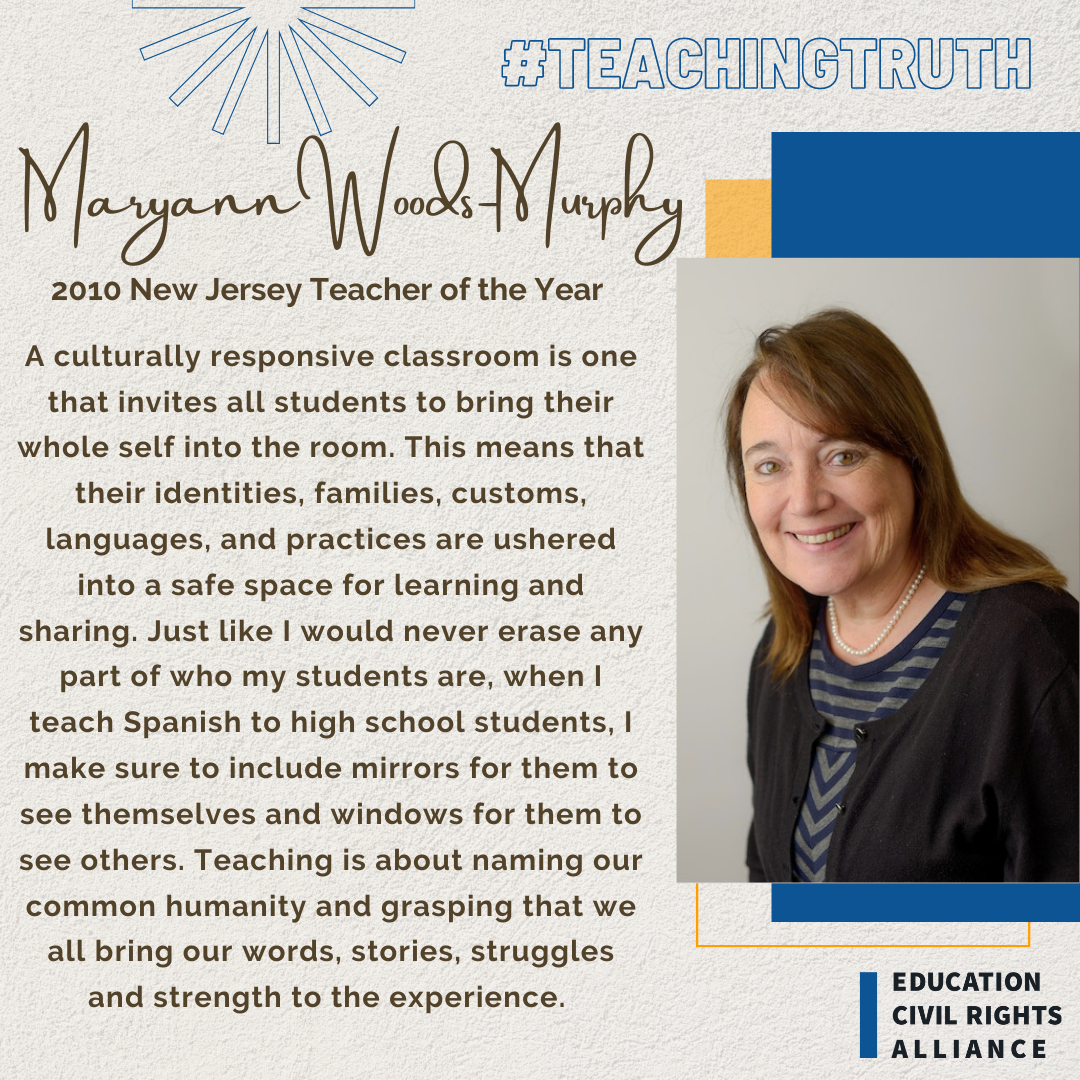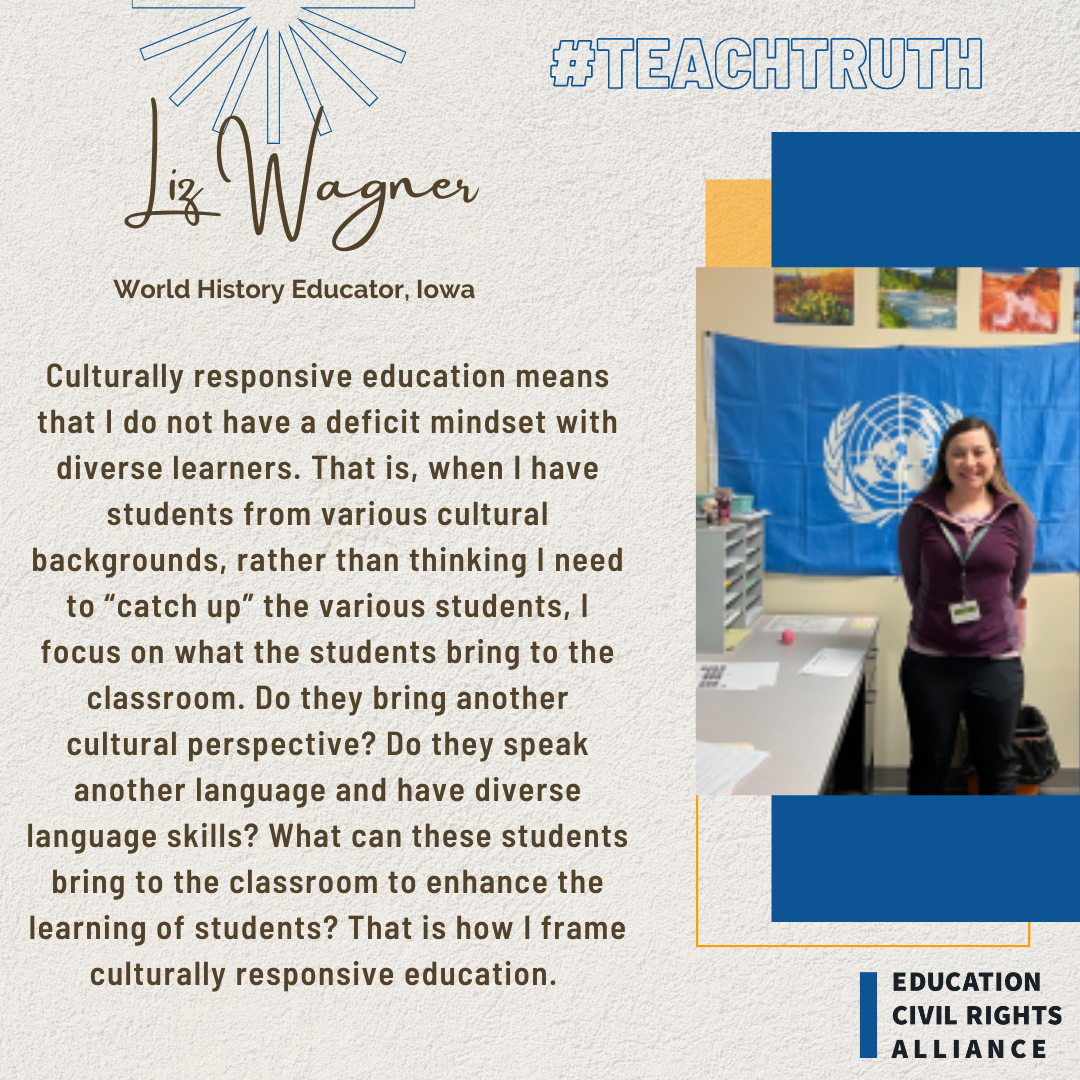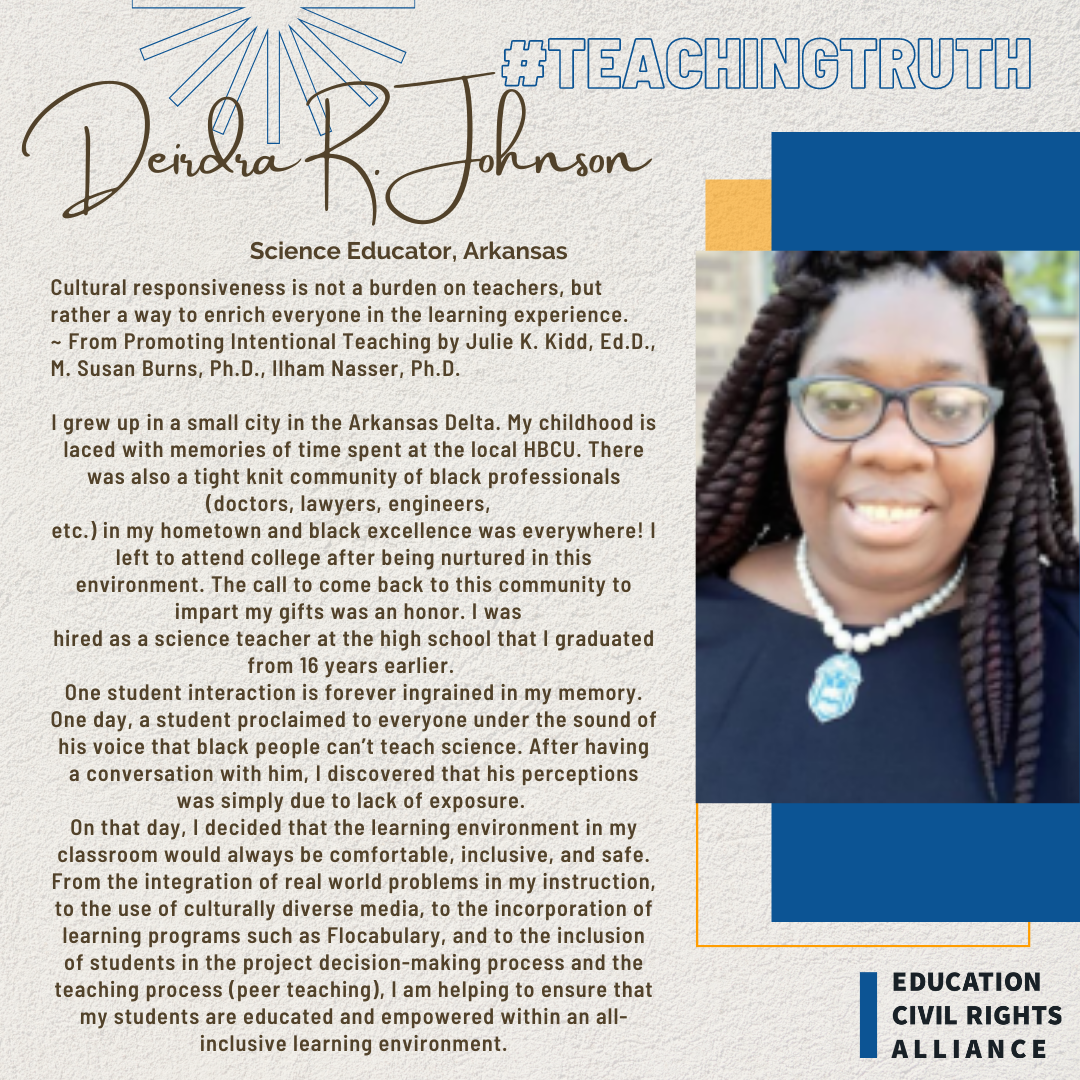Educator Voice: #HonestEducation
Building Tomorrow’s Leaders
Comprehensive and honest teaching of U.S. history
Kelisa Wing“As a classroom educator, I sought to show students all truth–highlighting both the good portions of our history and the bad. I believed that by knowing where we came from, we could better know where we can go–together…I wanted my students to be critical thinkers with the ability to look at every side of a situation and come to their own assumptions using facts.” |
|||
Victor Tate
|
|||
Dr. Jemelleh CoesIn my classroom, teaching truth means presenting students with all of the facts about any given topic and then asking them to explore their epistemological orientation.” (emphasis added). |
|||
Sydney Chaffee“In my 9th grade classroom, culturally responsive education means exploring the ways our identities have been impacted and shaped by history, as well as how students themselves can impact and shape history. It’s reading texts by Black and Latinx authors and honoring students’ knowledge and lived experiences during out discussions…” |
|||
Building a better future for our nation
 |
Monica Washington“An educator’s role is never to tell students what to believe but to inspire students to want to know more. Educators should always teach students how to find the truth and how to use that truth to become better citizens.” |
||
Manuel Rustin“Teaching a truthful history honors the voices of historically silenced communities...It enables my students to find answers to their many questions and to conceptualize a world in which ‘liberty and justice for all’ are more than mere words. Teaching truth is teaching the legacies of the many communities upon whose shoulders my students stand.” |
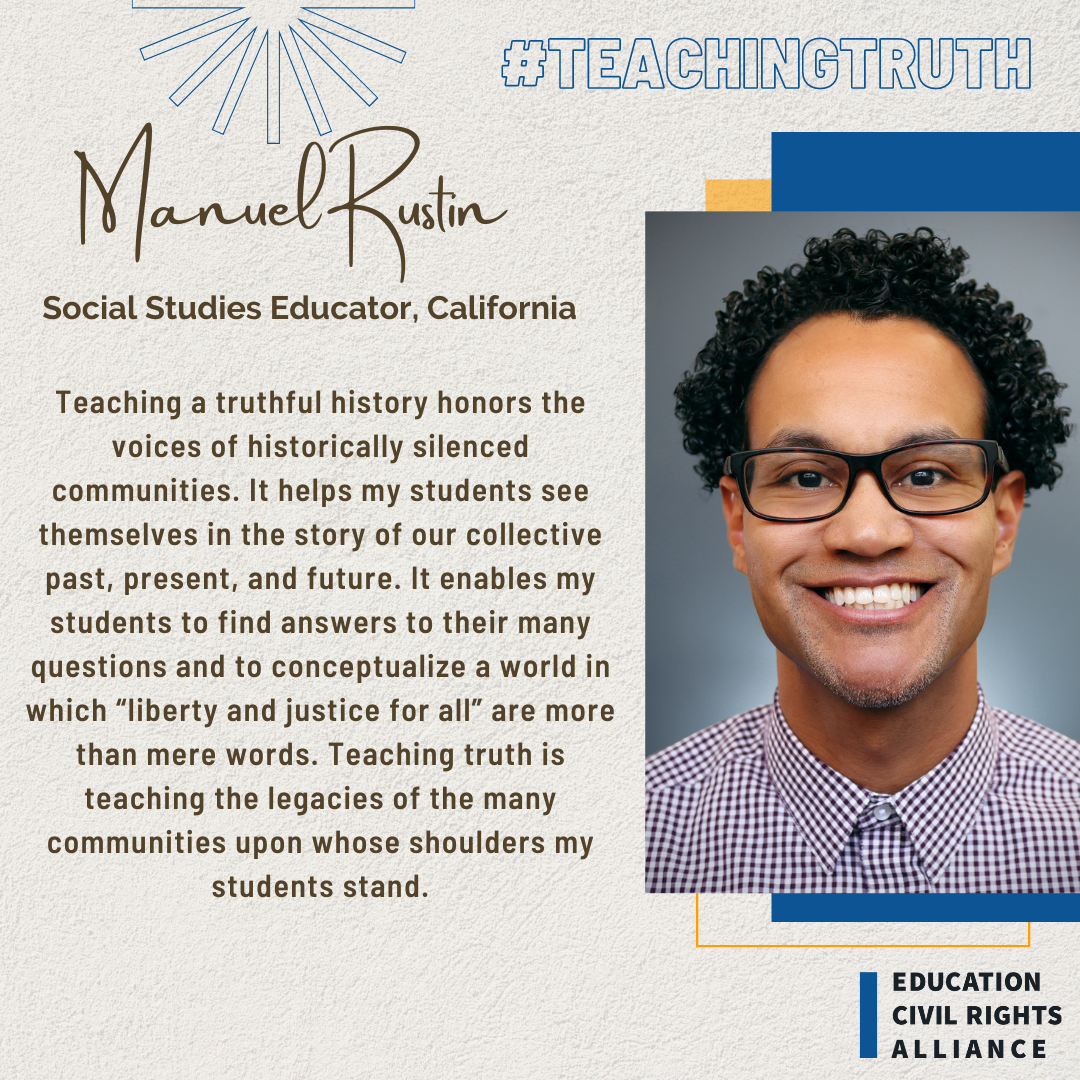
|
||
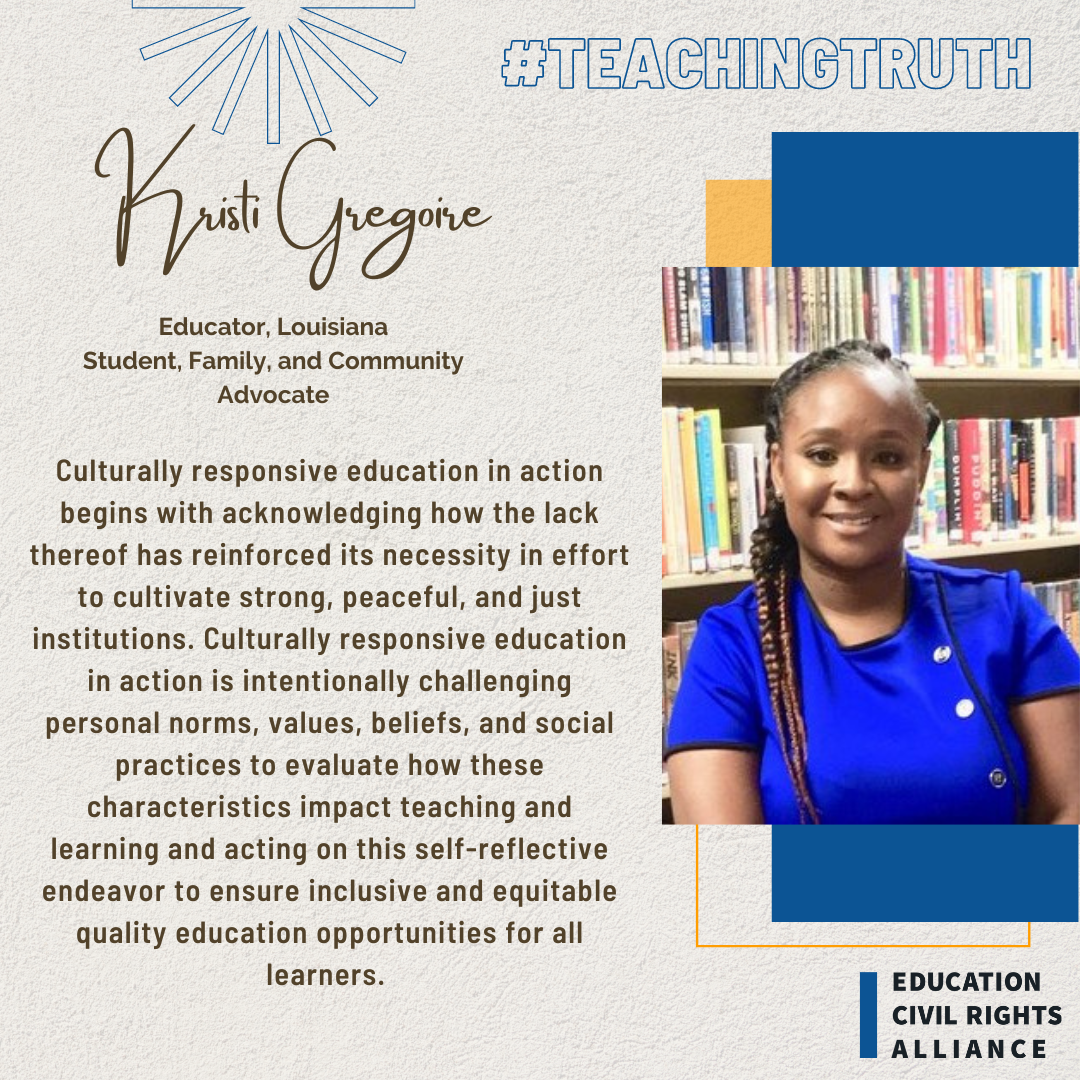 |
Kristi Gregoire“Culturally responsive education in action is intentionally challenging personal norms, values, beliefs, and social practices to evaluate how these characteristics impact teaching and learning and acting on this self-reflective endeavor to ensure inclusive and equitable quality education opportunities for all learners.” |
||
Leigh Ann Erickson“When we build authentic relationships, identify negative narratives and change them, provide tools to step into discomfort, and hold hope closely, we empower students to be changemakers.”
|
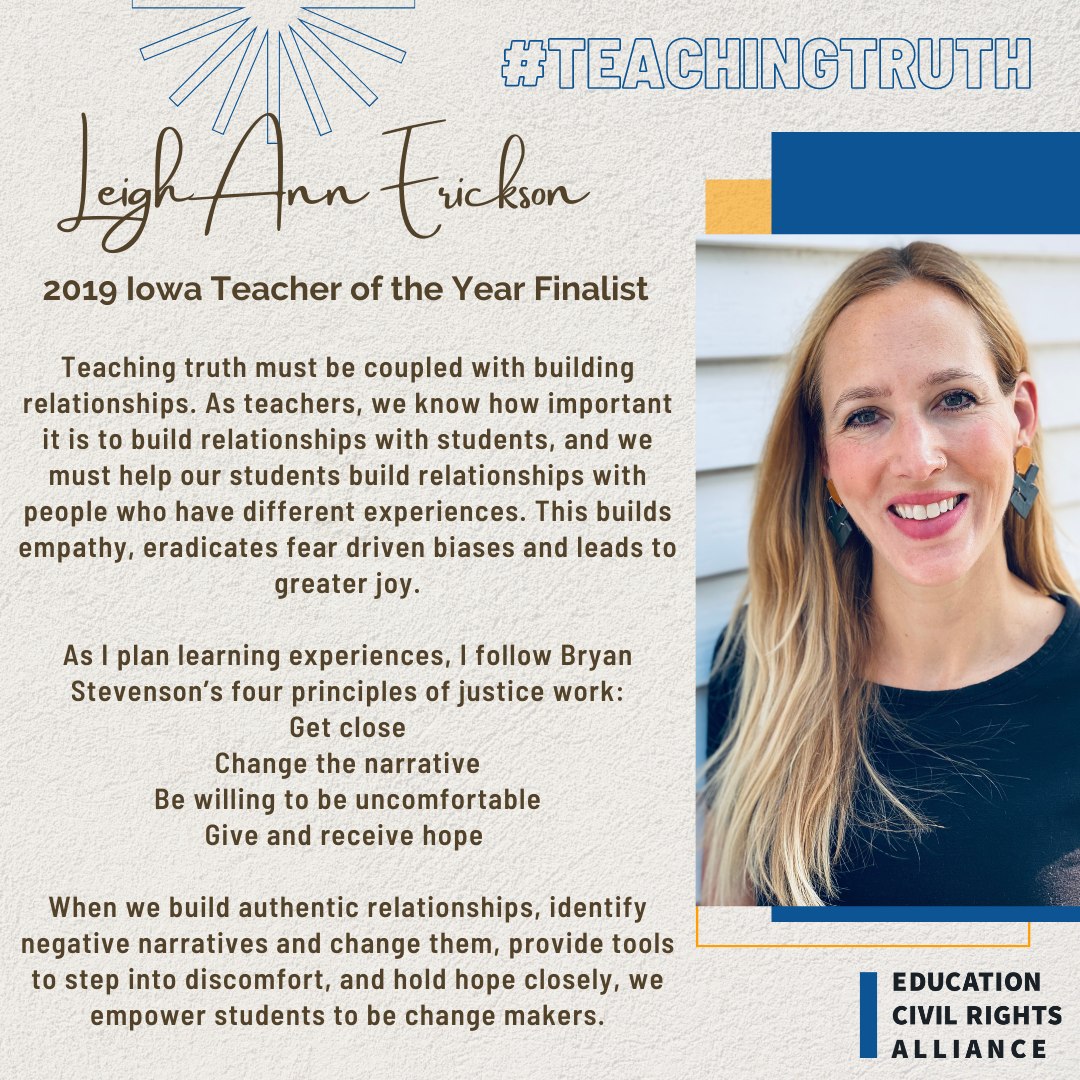 |
||
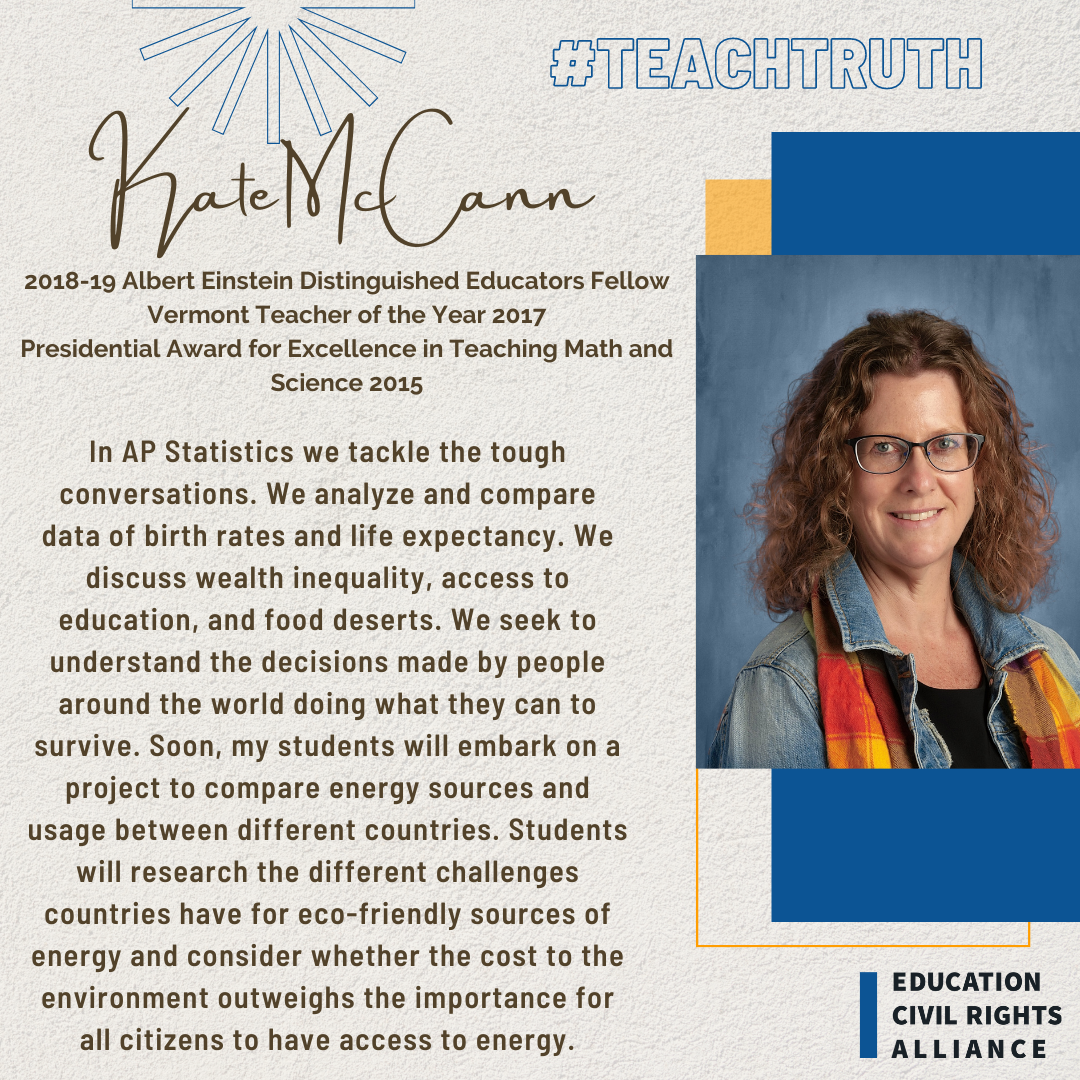 |
Kate McCann“In AP Statistics we tackle the tough conversations. We analyze and compare data of birth rates and life expectancy. We discuss wealth inequality, access to education, and food deserts. We seek to understand decisions made by people around the world doing what they can to survive.” |
||
Kiona Byrd“If you want to see equity in action, you have to involve culturally responsive teaching in classrooms. This means providing an inclusive experience for all of our children and allowing them to see themselves reflected in their educational experiences. The truth resides in communicating all histories to each other. This absolutely benefits all students.” |
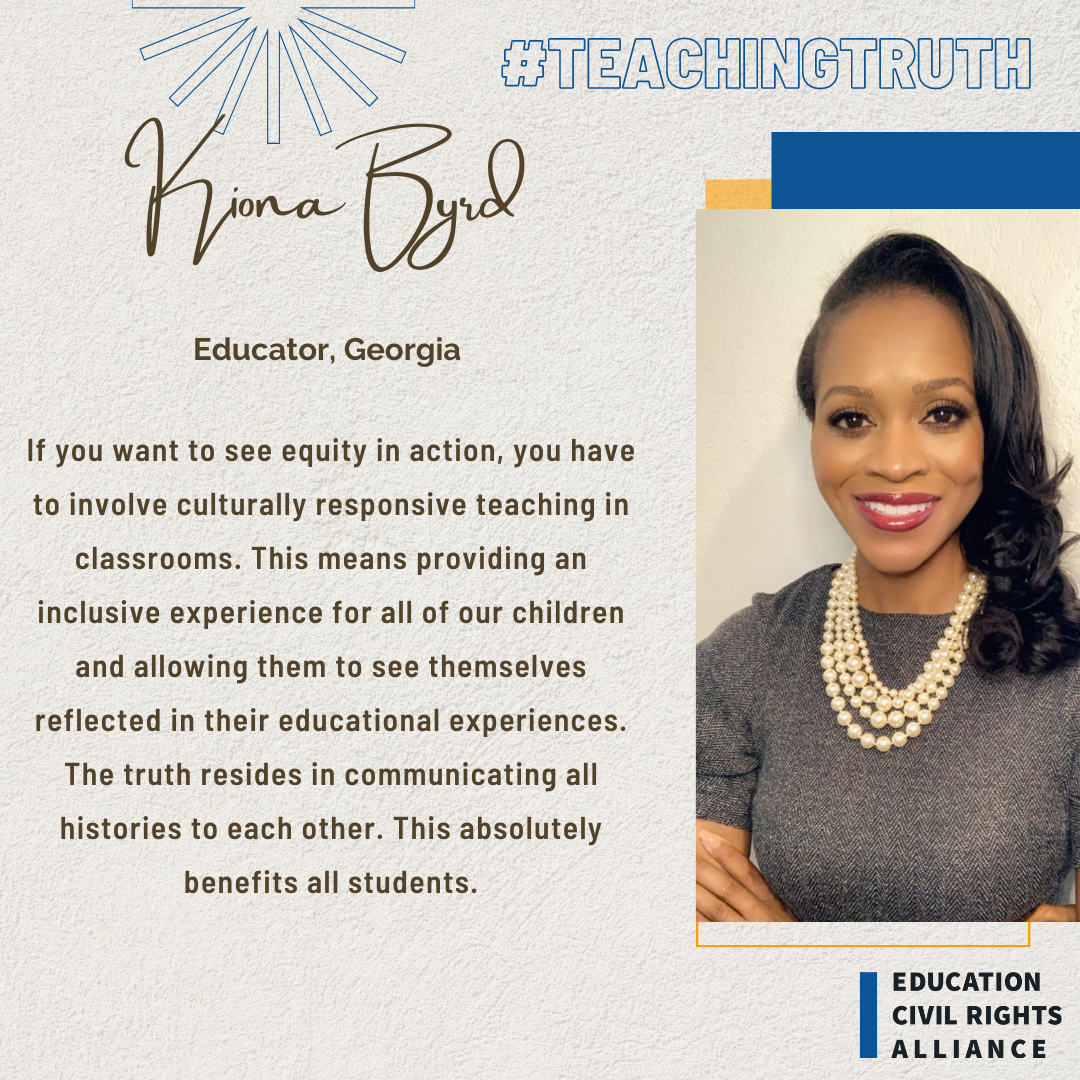 |
||
Preparing Students for Success in a Diverse World
Encouraging curiosity
Monica Washington“An educator’s role is never to tell students what to believe but to inspire students to want to know more. Educators should always teach students how to find the truth and how to use that truth to become better citizens.” |
 |
||
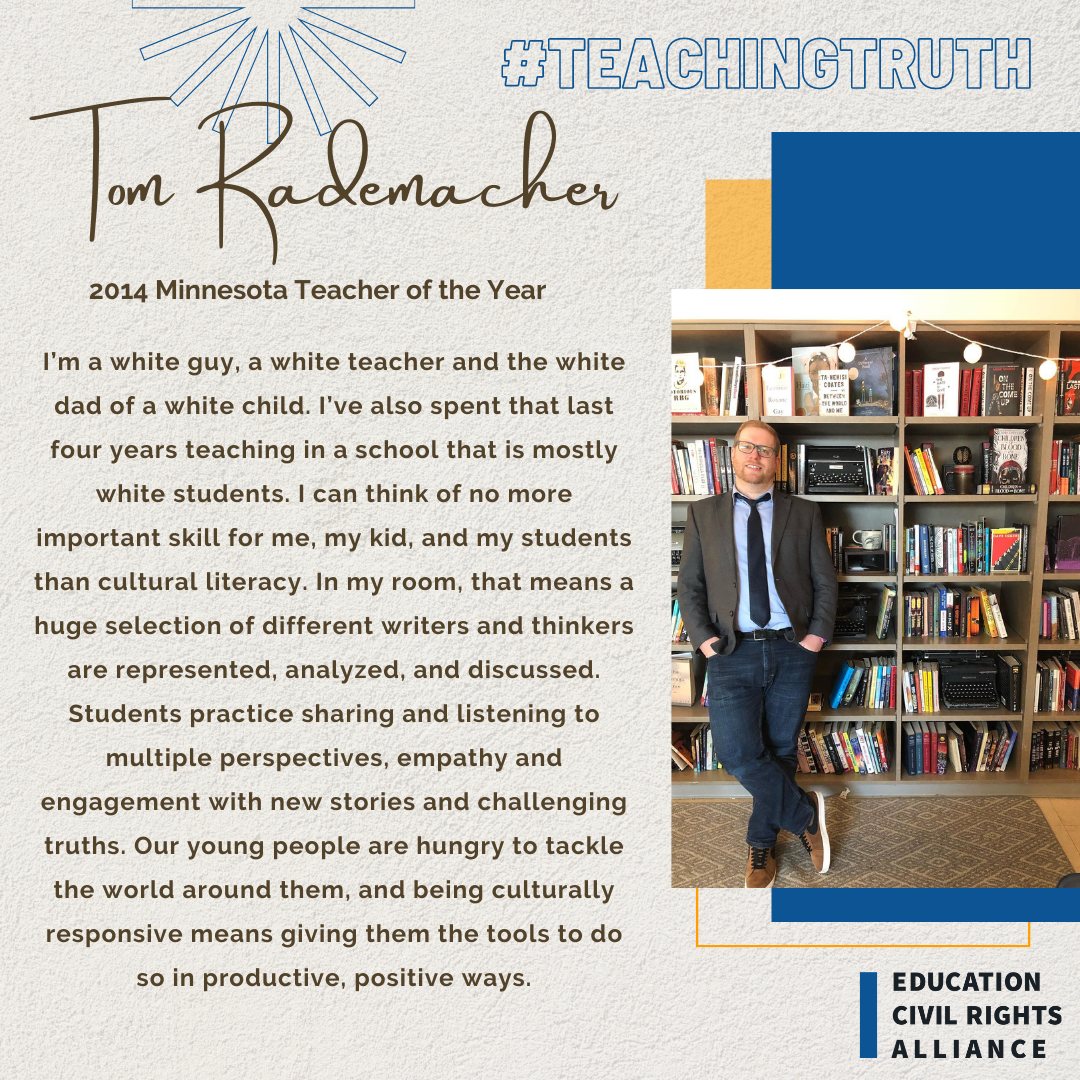 |
Tom Rademacher“In my room, that means a huge selection of different writers and thinkers are represented, analyzed, and discussed. Students practice sharing and listening to multiple perspectives, empathy, and engagement with new stories and challenging truths.” |
||
Kelisa Wing“As a classroom educator, I sought to show students all truth–highlighting both the good portions of our history and the bad. I believed that by knowing where we came from, we could better know where we can go–together…I wanted my students to be critical thinkers with the ability to look at every side of a situation and come to their own assumptions using facts.” |
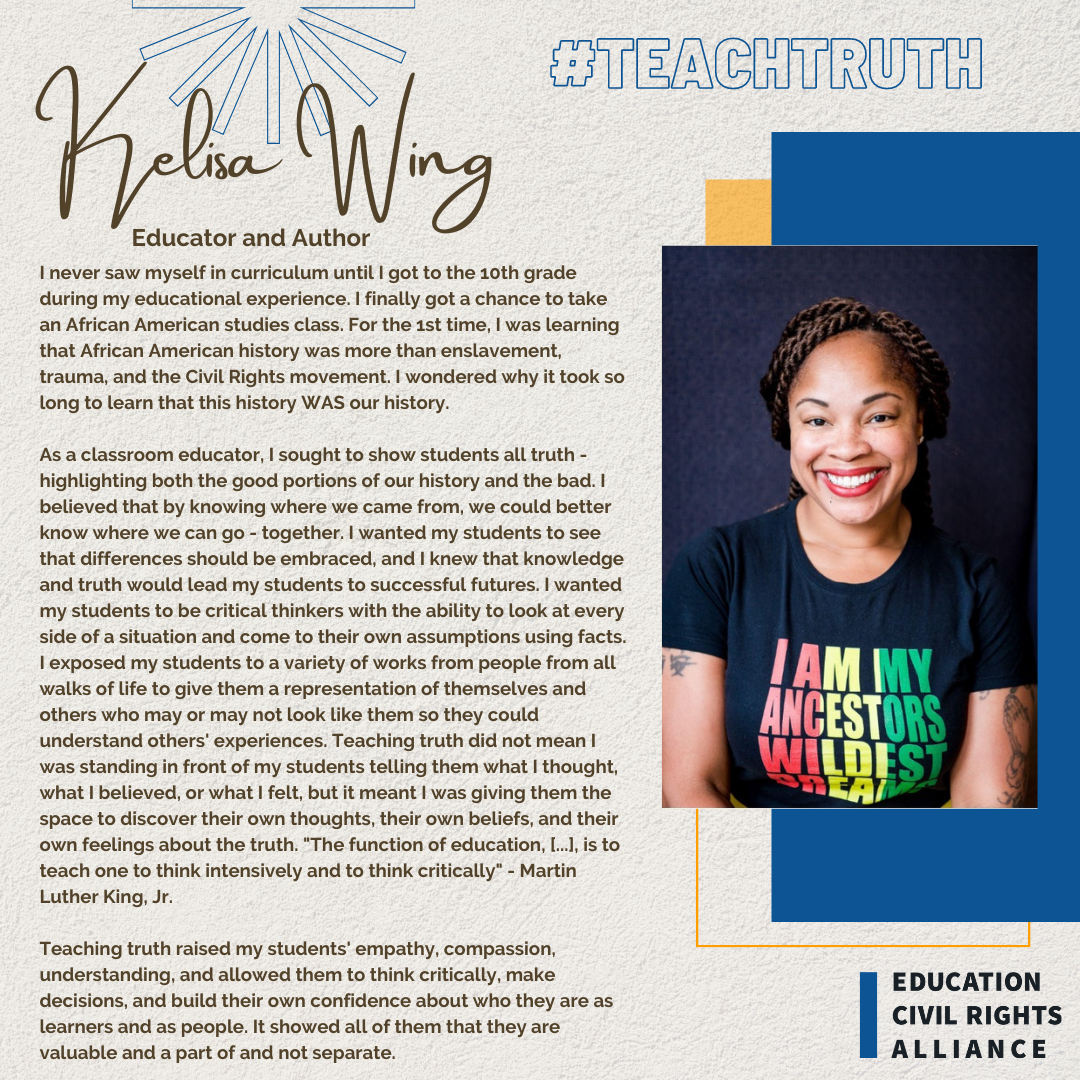 |
||
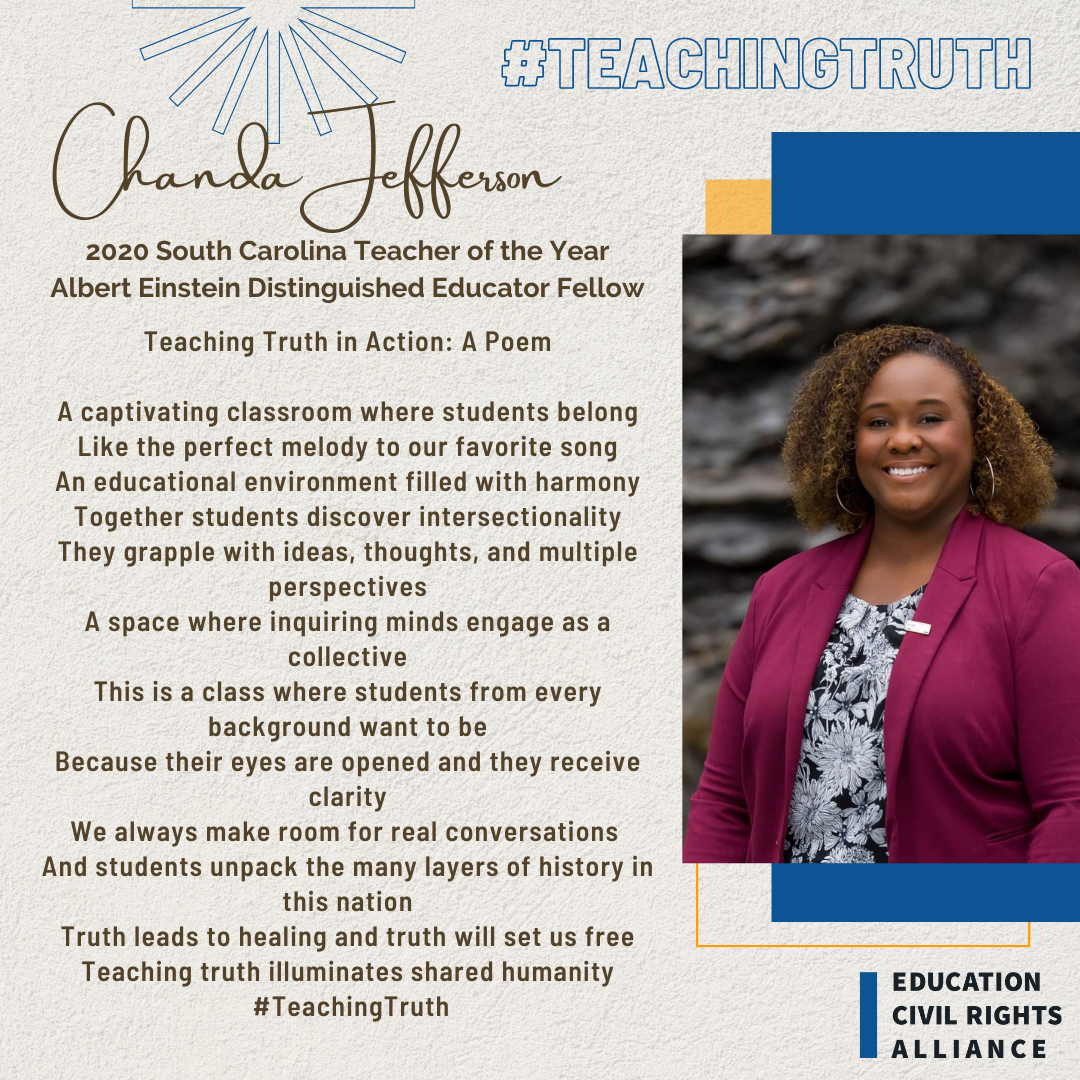
|
Chanda Jefferson“They grapple with ideas, thoughts, and multiple perspectives |
||
Dr. Cicely Woodard
|
|||
Maryann Woods-Murphy"Teaching is about naming our common humanity and grasping that we all bring our words, stories, struggles, and strength to the experience.”
|
|||
Dr. Jemelleh Coes“That is what teaching truth is about, questioning everything and connecting back to the foundation of what we hope students will always put at the forefront of their thoughts and actions: Humanity.” |
|
||
Michael Flowers“We have to continue, through culturally responsive teaching, to make every student feel valued and to encourage them to learn more in the class. When that happens, they will be empowered, they will be inspired, and they will be motivated to fulfill their potential.” |
|||
Kareem Neal
|
Build understanding of different communities
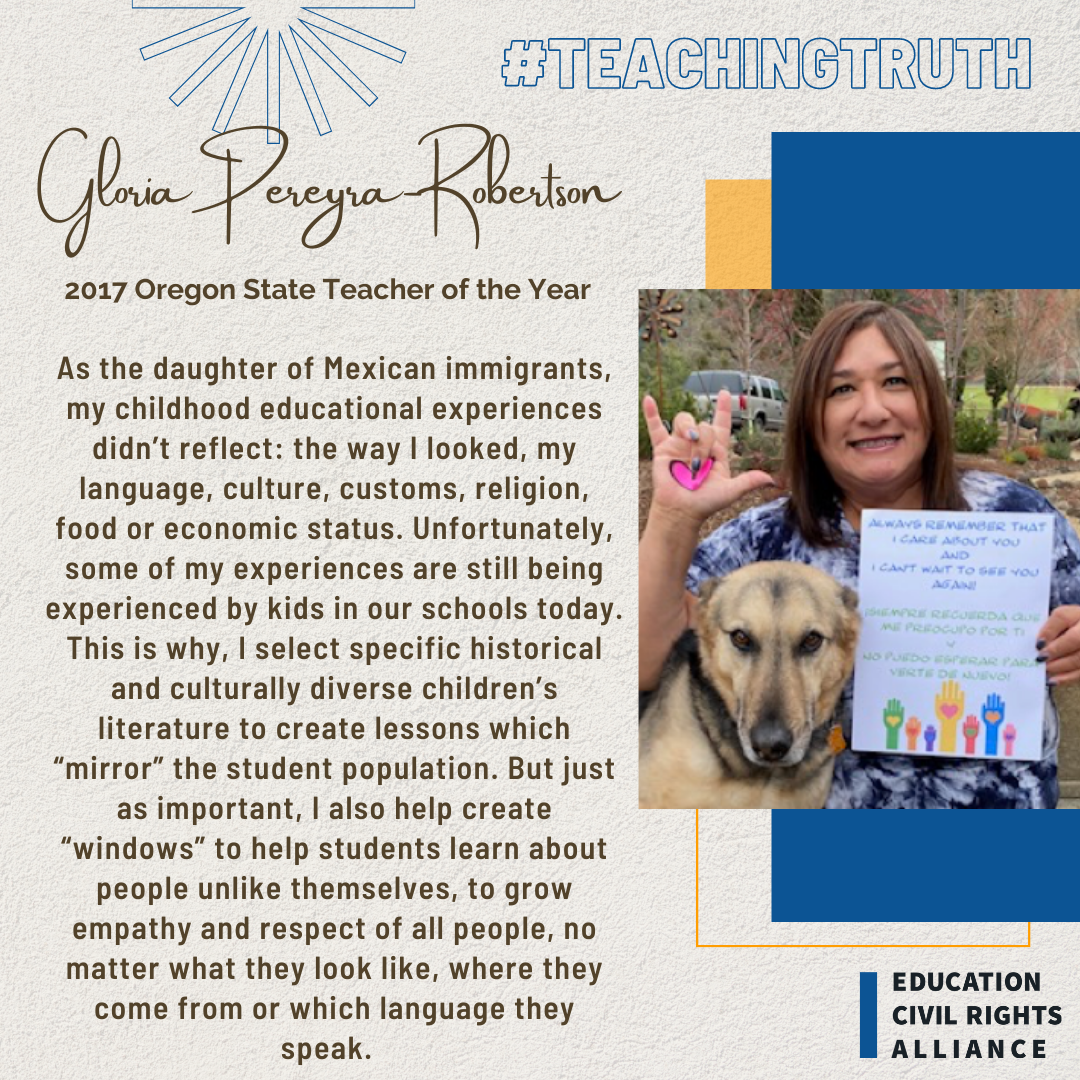
|
Gloria Pereyra Robertson“I select specific historical and culturally diverse children’s literature to create lessons which ‘mirror’ the student population. But just as important, I also help create ‘windows’ to help students learn about people unlike themselves, to grow empathy and respect of all people, no matter what they look like, where they come from, or which language they speak.” |
||
Romana Mathews“When students are encouraged to show up as their authentic selves, deeper learning can occur. When various identities are encouraged in classrooms, the benefits of culturally responsive education extend beyond the students. Schools become better equipped to support students as they navigate real-world conflict and interpersonal relationships with people of different racial identities.” |
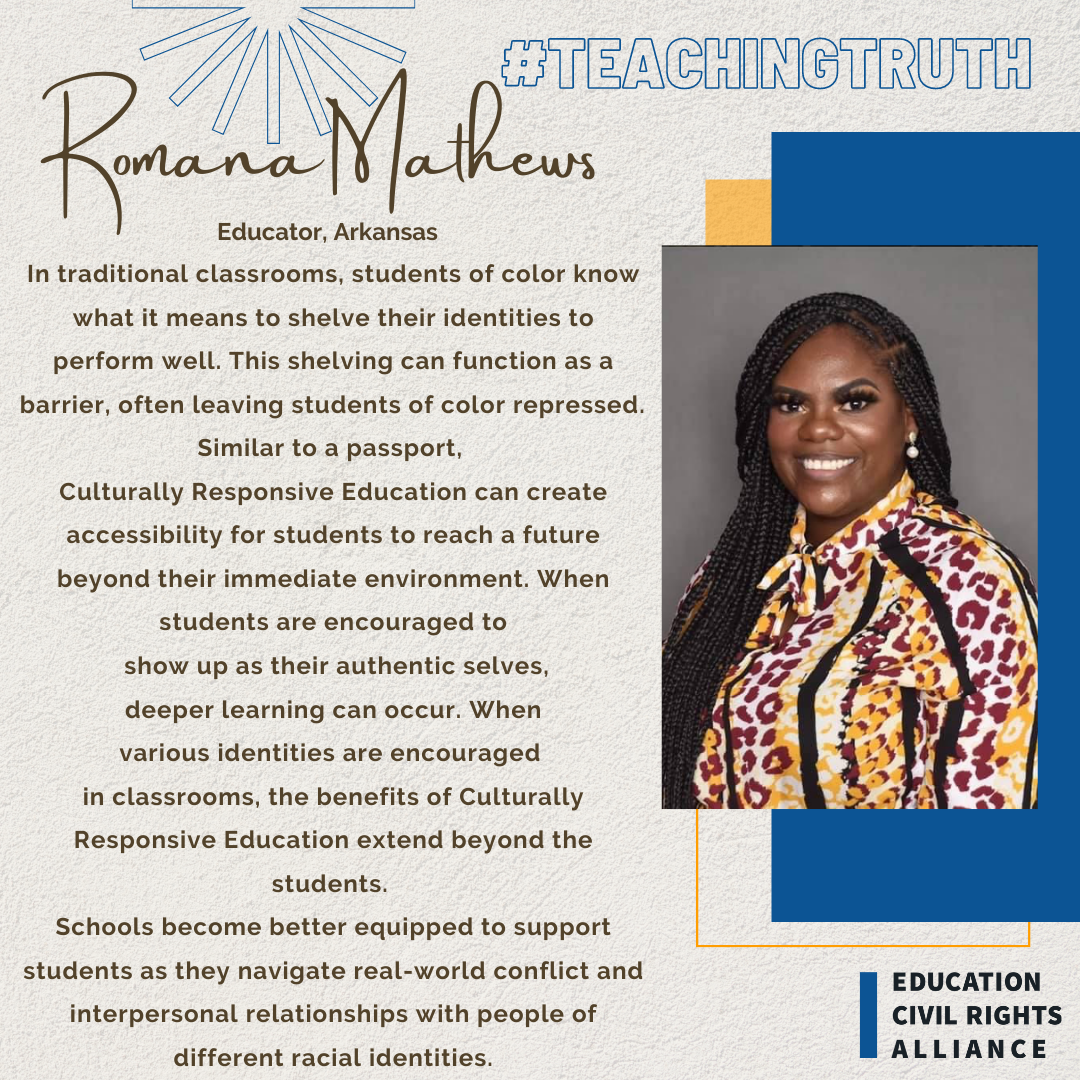
|
||
Natasha Wilkins“They believed that who they were and where they come from were validated in that space.” |
|||
Kate McCann“In AP Statistics we tackle the tough conversations. We analyze and compare data of birth rates and life expectancy. We discuss wealth inequality, access to education, and food deserts. We seek to understand decisions made by people around the world doing what they can to survive.” |
 |
||
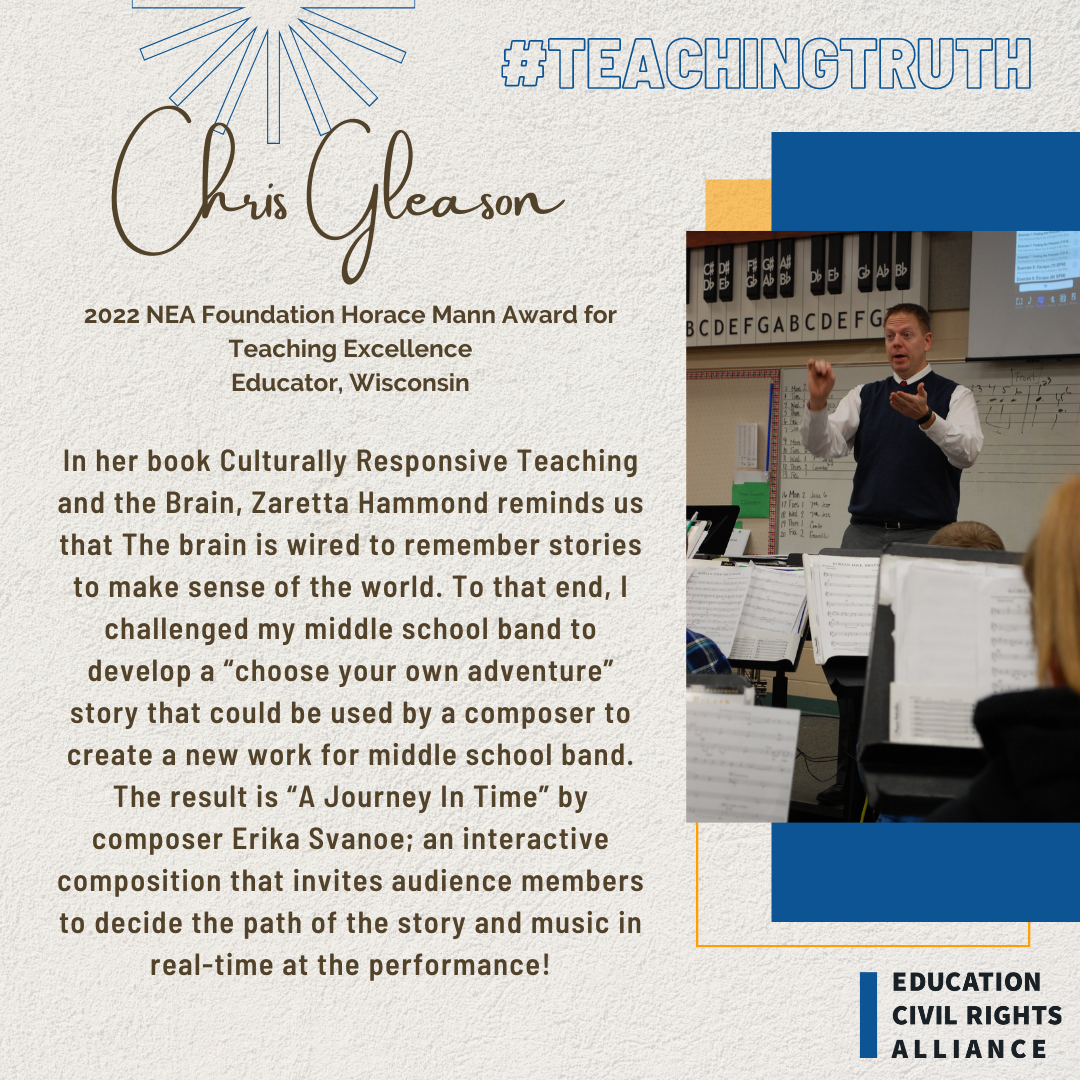 |
Chris Gleason
|
||
Dr. Megan Olivia Hall“In my EL Education school, students gather daily for an advisory class called Crew. Crew curriculum includes student-guided lessons on building inclusive community through teambuilding and cultural awareness. For example, after Crew teachers outlined lessons on LGBTQ+ identity, the school’s GSA club completed the lessons with readings and activities to deepen schoolwide awareness of timely LGBTQ+ identity issues.” |
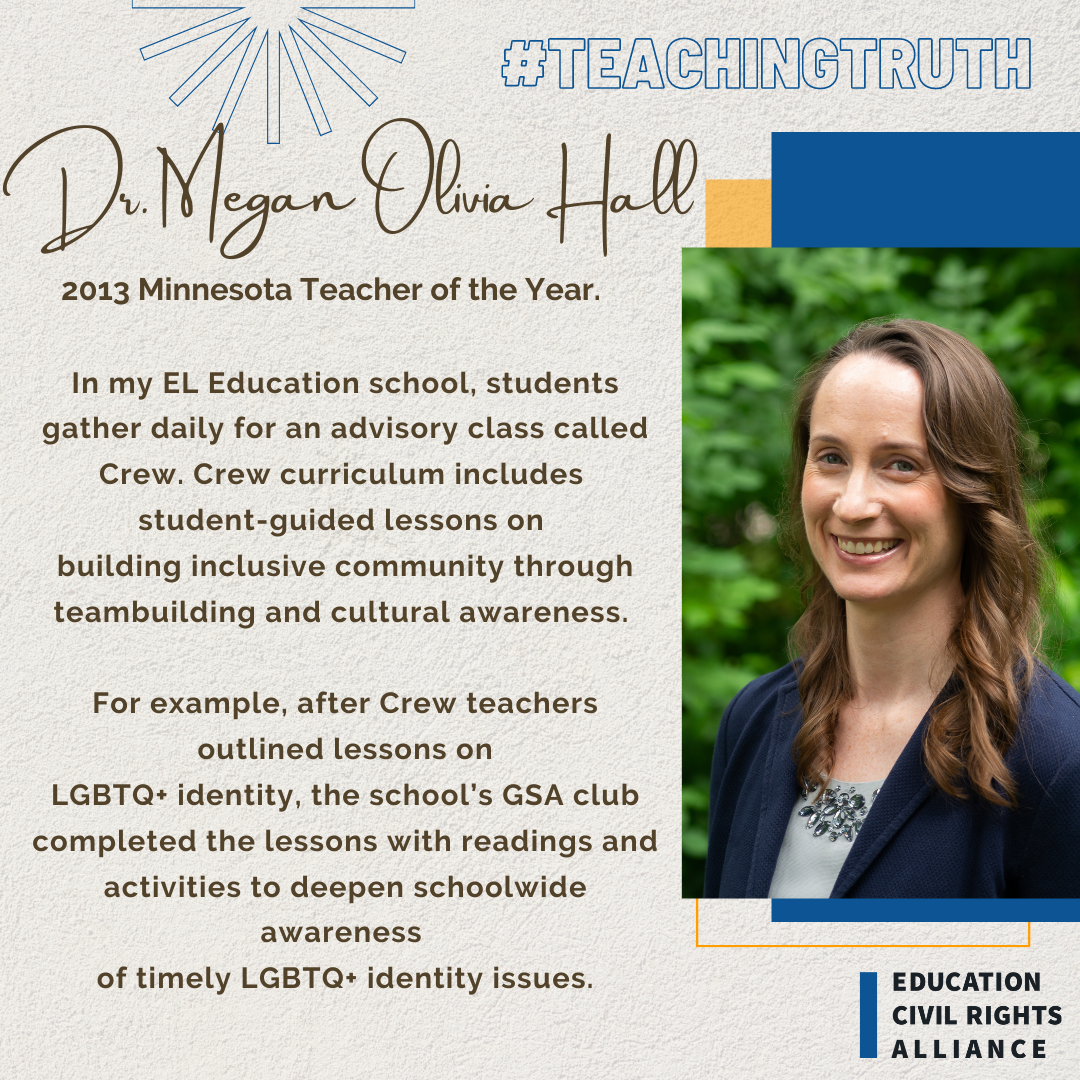 |
||
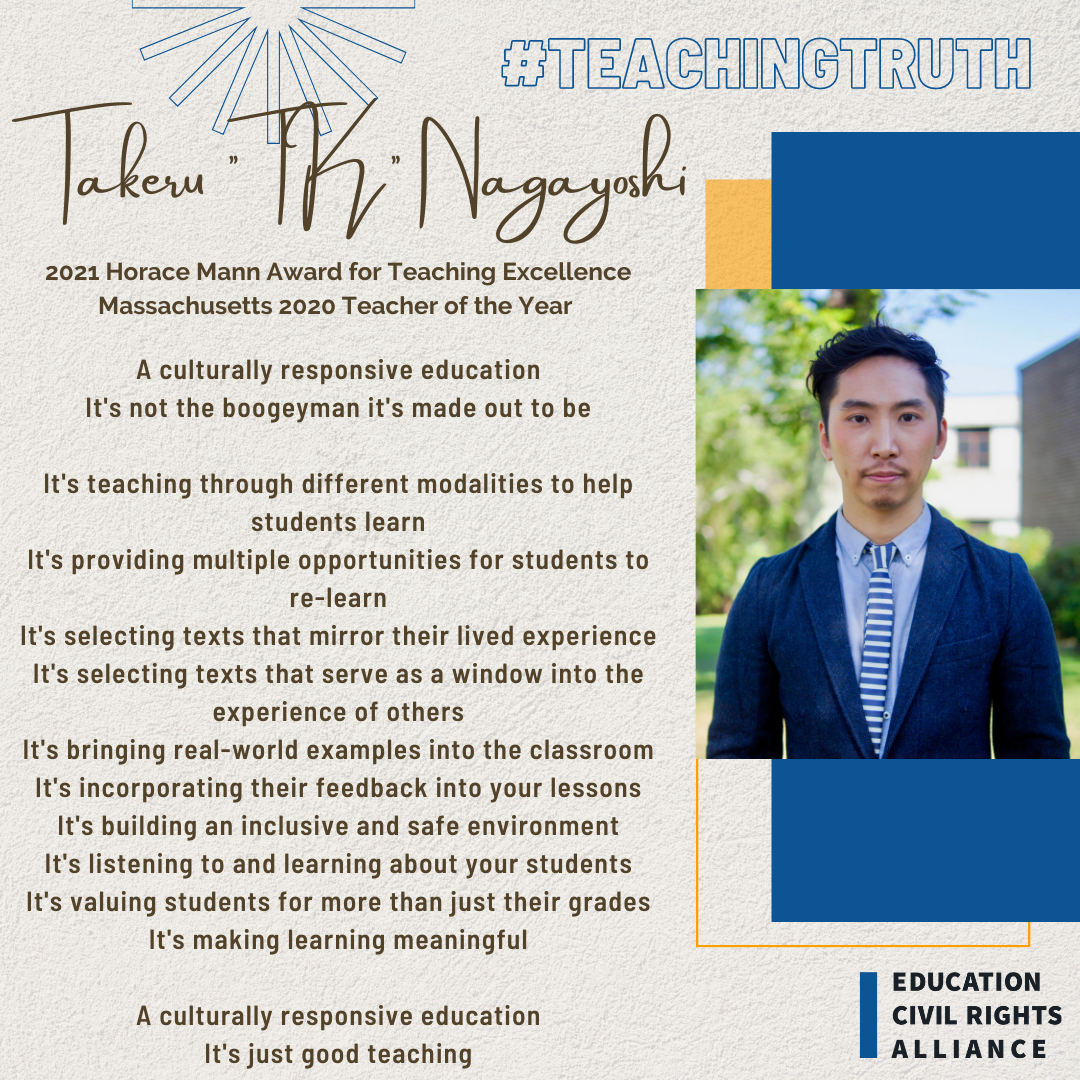 |
Takeru Nagayoshi“A culturally responsive education |
||
Victor Tate
|
|||
Ron Hustvedt
|
Valuing Every Student
Including every child's culture and experience
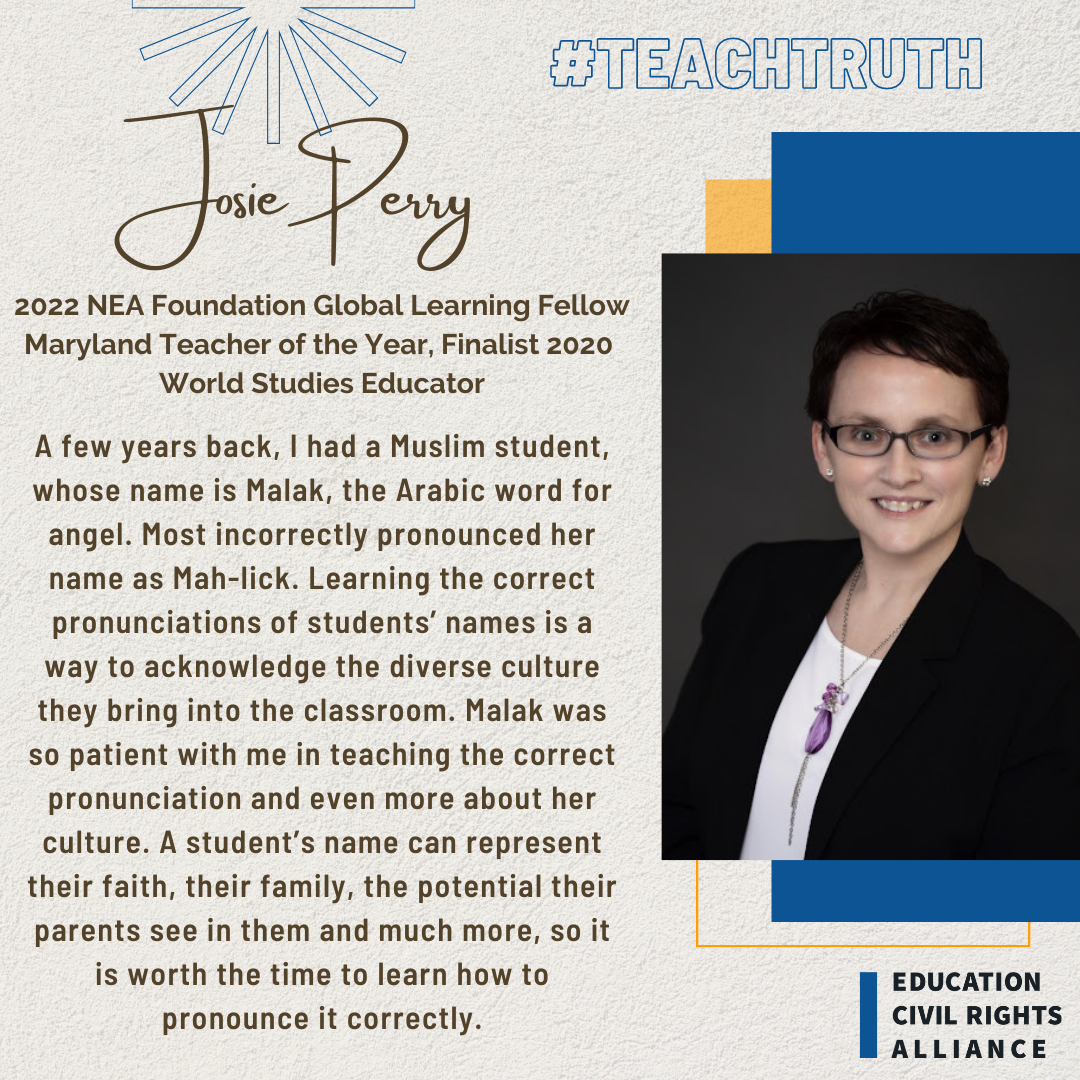
|
Josie Perry“Learning the correct pronunciations of students’ names is a way to acknowledge the diverse culture they bring into the classroom...A student’s name can represent their faith, their family, the potential their parents see in them and much more, so it is worth the time to learn how to pronounce it correctly.” |
||
Liz Wagner“I focus on what the students bring to the classroom. Do they bring another cultural perspective? Do they speak another language and have diverse language skills? What can these students bring to the classroom to enhance the learning of students?” |
|
||
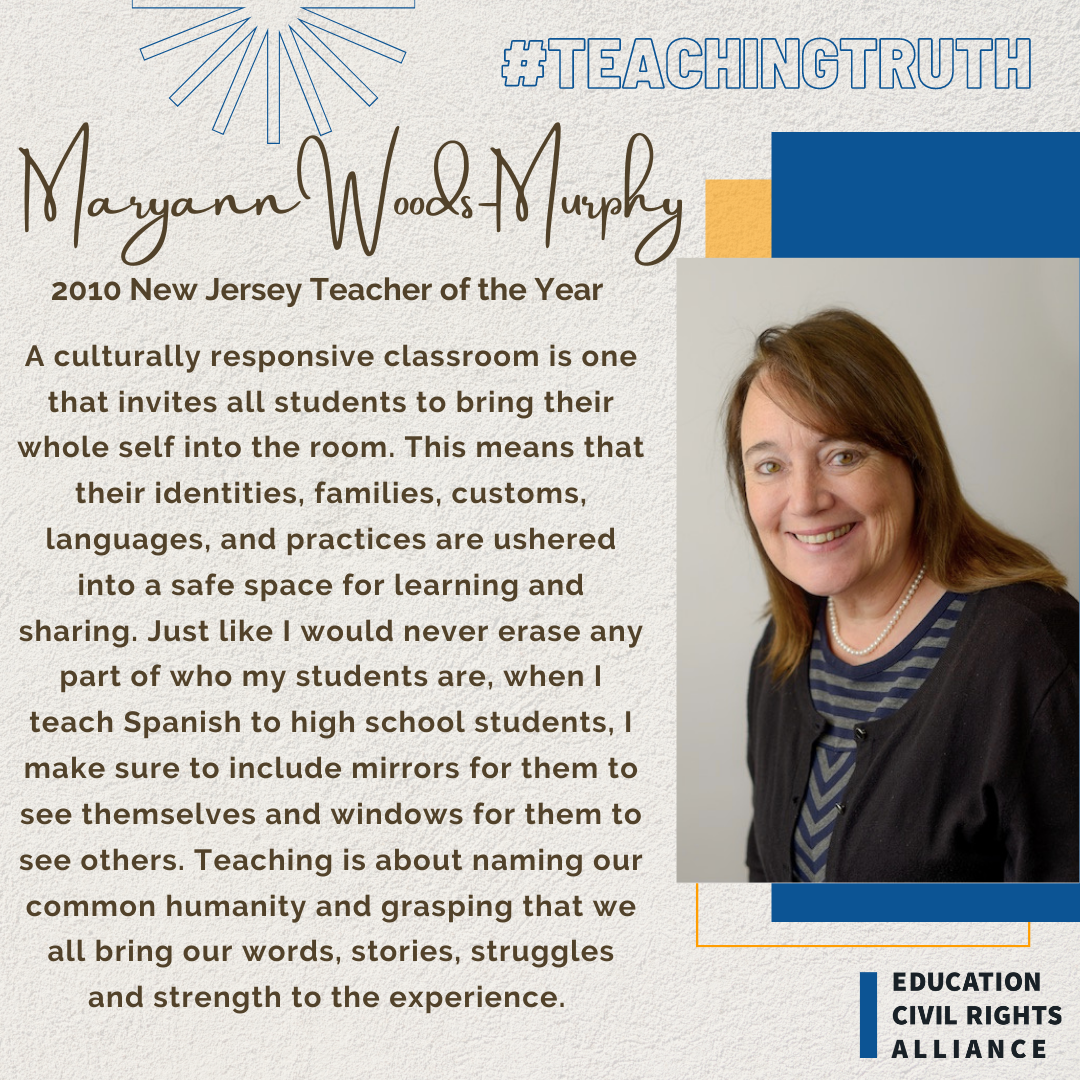 |
Maryann Woods-Murphy“A culturally responsive classroom is one that invites all students to bring their whole self into the room. This means that their identities, families, customs, languages, and practices are ushered into a safe space for learning and sharing.” |
||
Neliva Johnson“Culturally responsive teaching starts with authentically getting to know your students... Teachers have to ask questions that are relevant to their student demographics. Culturally responsive teaching requires teachers to think outside of the normal paradigm. We know not all students are like, we must find those tools to reach all students.” |
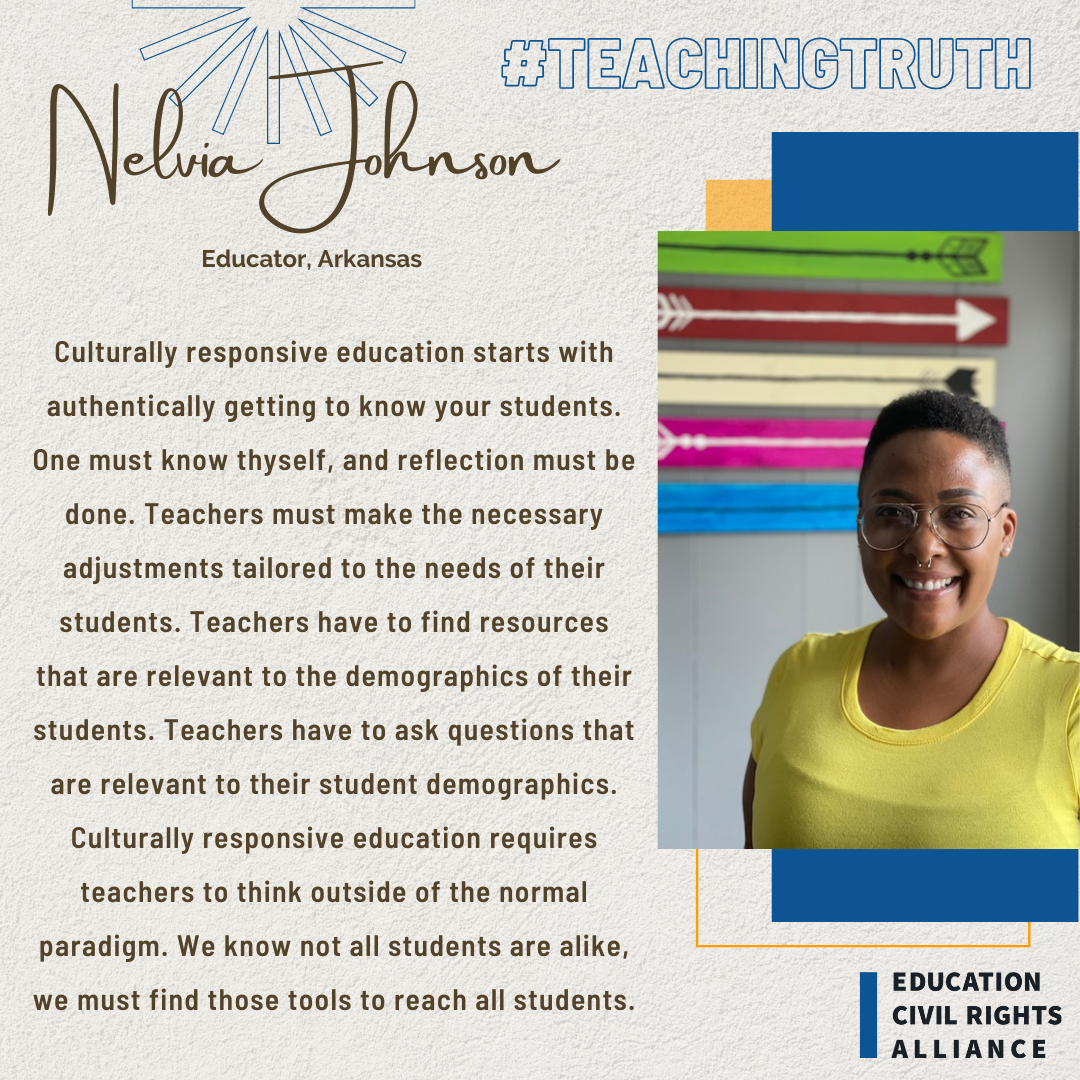
|
||
Ron Hustvedt |
|||
Deirdra R. Johnson"...I decided that the learning environment in my classroom would always be comfortable, inclusive, and safe. " |
|||
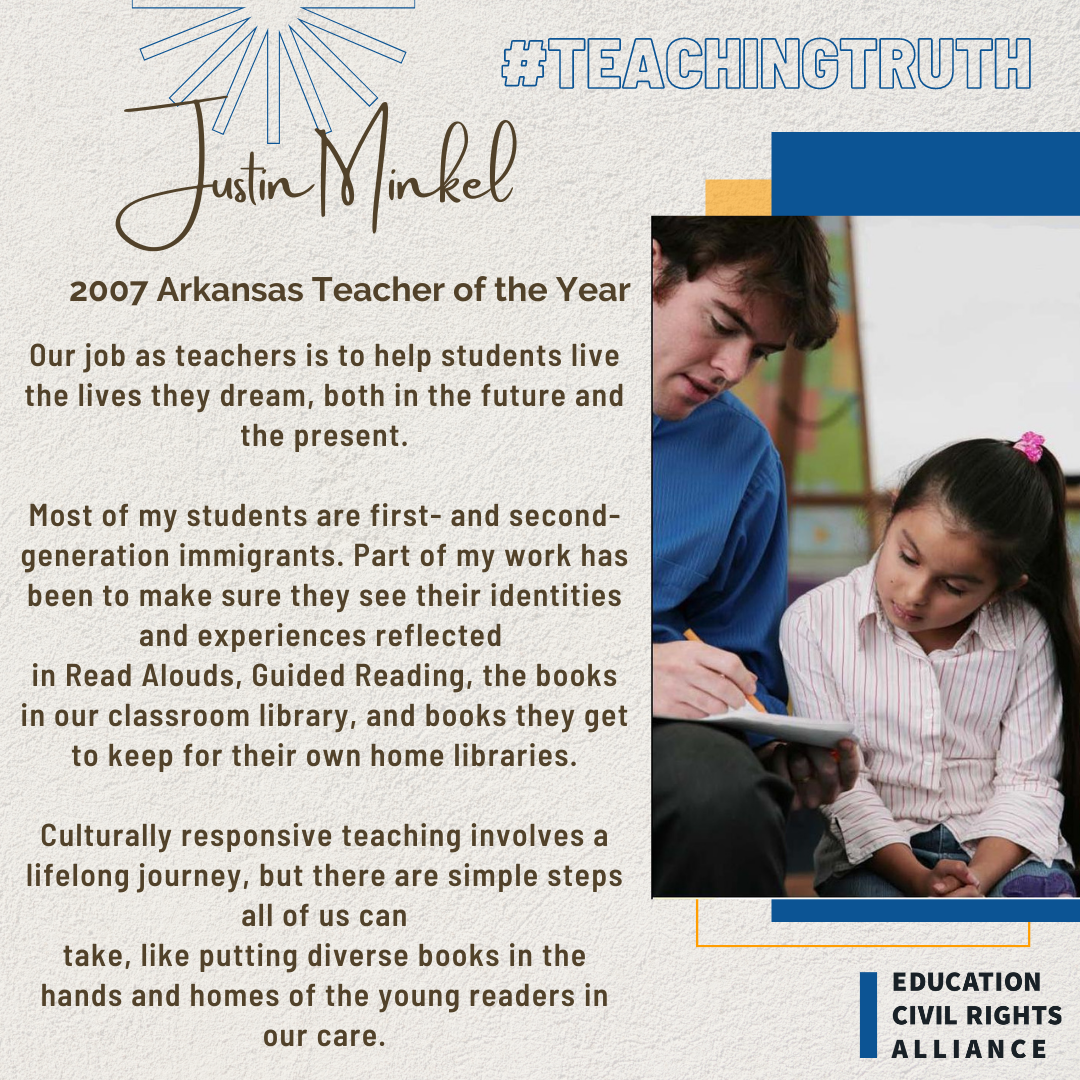 |
Justin Minkel"Most of my students are first- and second- generation immigrants. Part of my work has been to make sure they see their identities and experiences reflected... there are simple steps all of us can take, like putting diverse books in the hands and homes of the young readers in our care.” |
||
Gloria Pereyra Robertson“As the daughter of Mexican immigrants, my childhood educational experiences didn’t reflect: the way I looked, my language, culture, customs, religion, food or economic status. Unfortunately, some of my experiences are still being experienced by kids in our schools today. This is why, I select specific historical and culturally diverse children’s literature to create lessons which ‘mirror’ the student population.” |
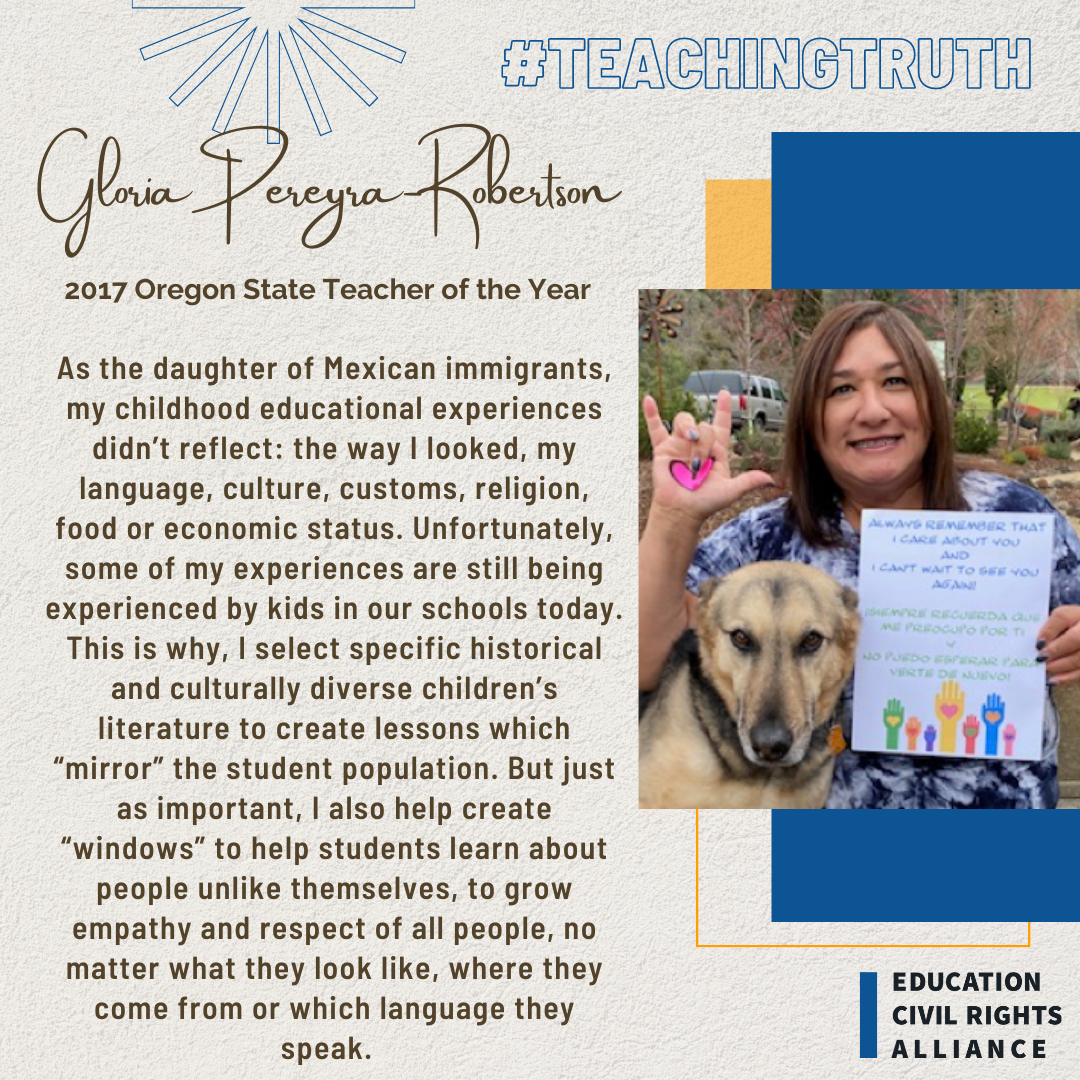
|
||
Romana Mathews"When students are encouraged to show up as their authentic selves, deeper learning can occur. When various identities are encouraged in classrooms, the benefits of culturally responsive education extend beyond the students. Schools become better equipped to support students as they navigate real-world conflict and interpersonal relationships with people of different racial identities.” |
 |
||
Deon Harris
|
|||
 |
Manuel Rustin“Teaching a truthful history honors the voices of historically silenced communities. It helps my students see themselves in the story of our collective past, present, and future. It enables my students to find answers to their many questions and to conceptualize a world in which ‘liberty and justice for all’ are more than mere words. Teaching truth is teaching the legacies of the many communities upon whose shoulders my students stand.” |
||
Leigh Ann Erickson“When we build authentic relationships, identify negative narratives and change them, provide tools to step into discomfort, and hold hope closely, we empower students to be changemakers.”
|
 |
||
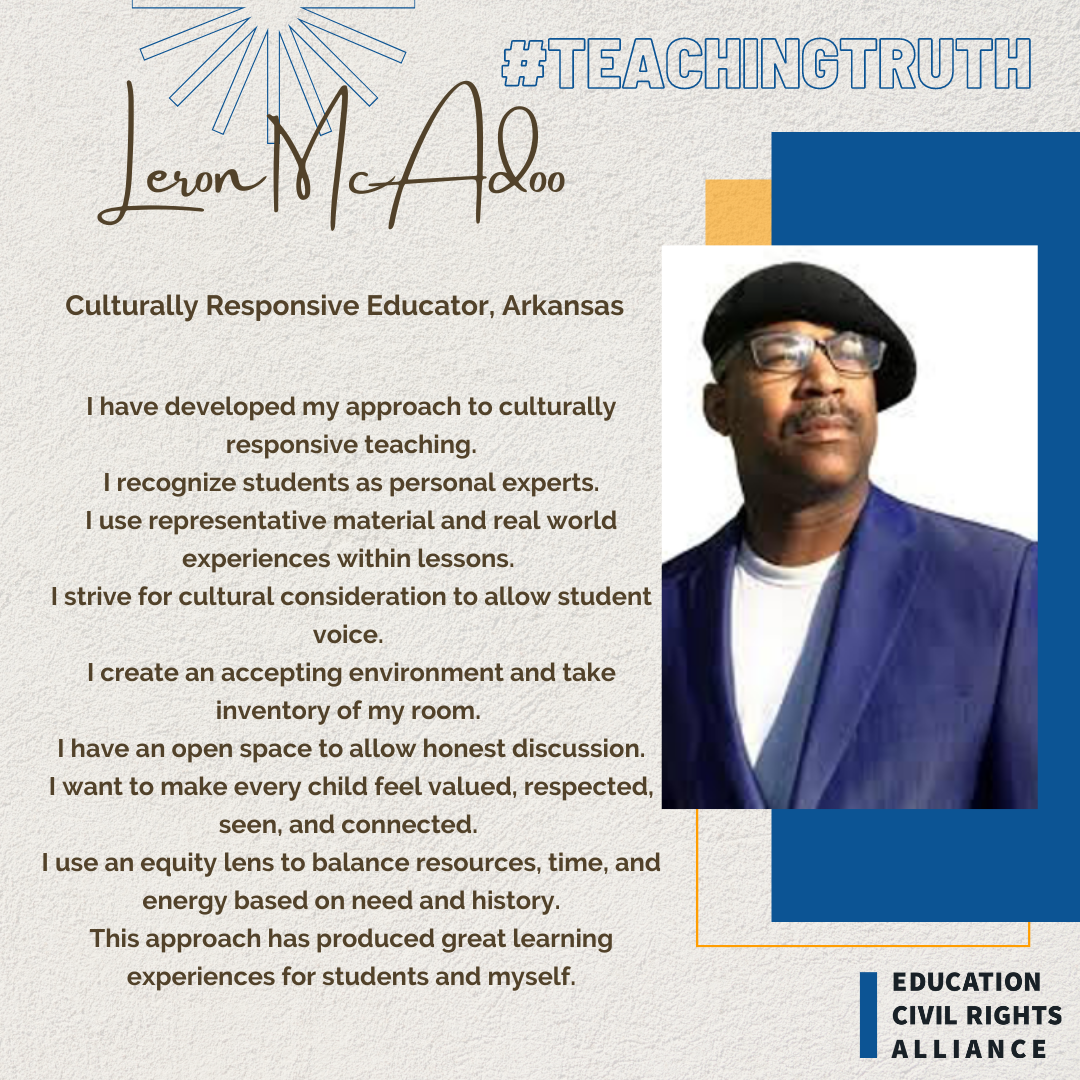 |
Leron McAddo“I have an open space to allow honest discussion. I want to make every child feel valued, respected, seen, and connected. I use an equity lens to balance resources, time, and energy based on need and history. This approach has produced great learning experiences for students and myself.” |
||
Chris Gleason
|
 |
A welcoming classroom
 |
Leron McAddo“I have an open space to allow honest discussion. I want to make every child feel valued, respected, seen, and connected. I use an equity lens to balance resources, time, and energy based on need and history. This approach has produced great learning experiences for students and myself.” |
||
Kiona Byrd“If you want to see equity in action, you have to involve culturally responsive teaching in classrooms. This means providing an inclusive experience for all of our children and allowing them to see themselves reflected in their educational experiences.” |
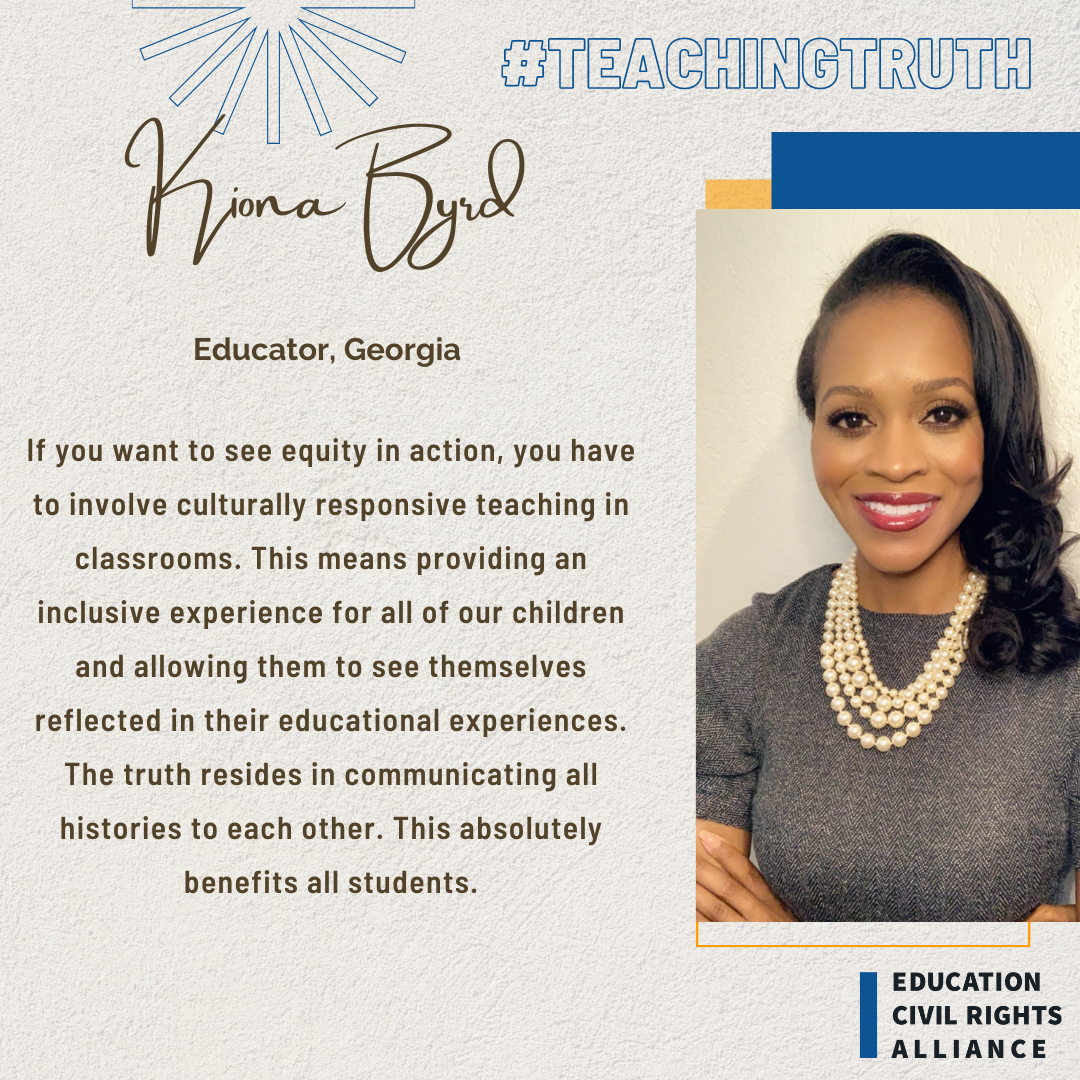 |
||
Kathy Purviance“Teaching Truth is like a kaleidoscope; it's changing your perspective to meet your students where they are and learn about them as whole people.” |
|||
Natasha Wilkins
|
|||
Dr. Shakiyya Bland
|
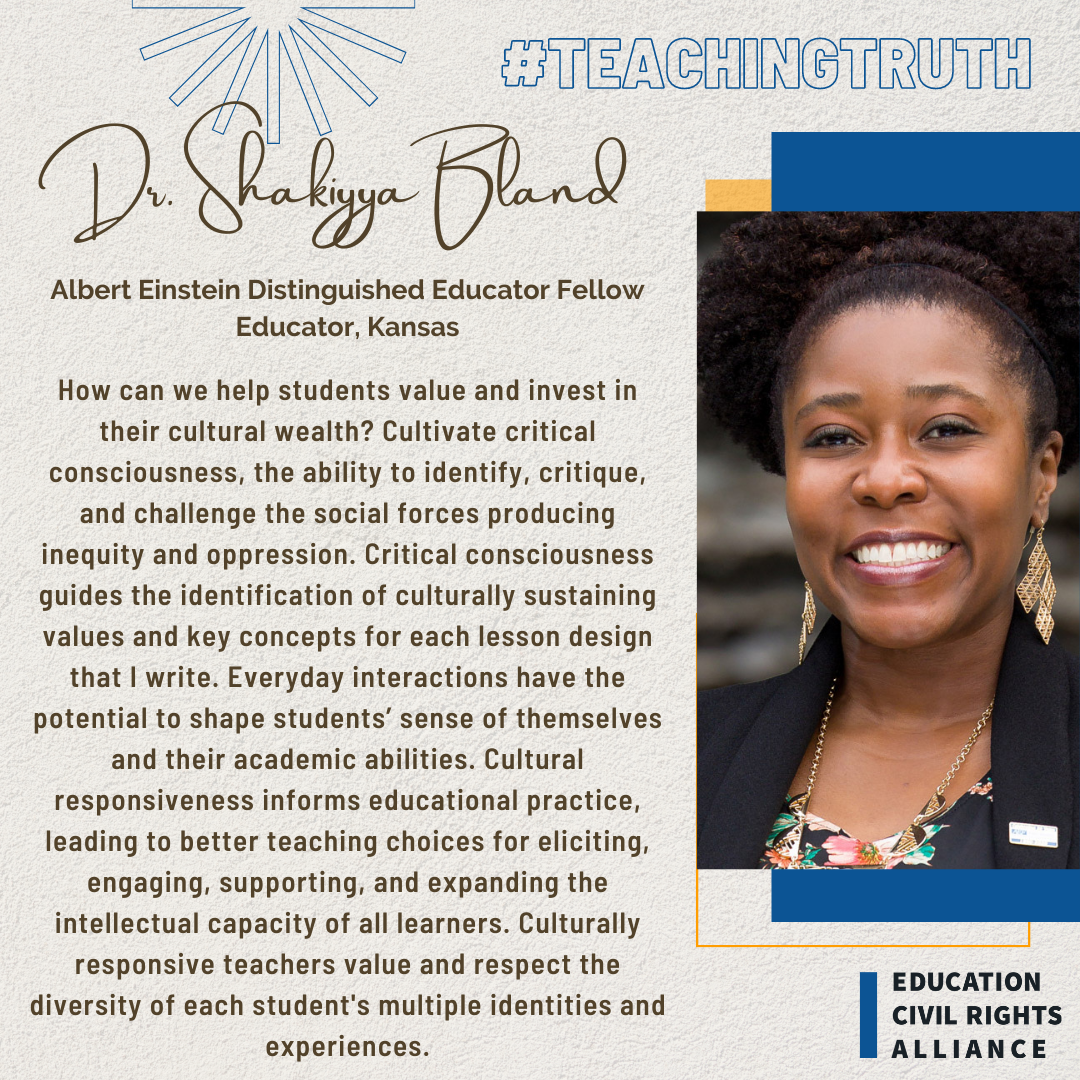 |
||
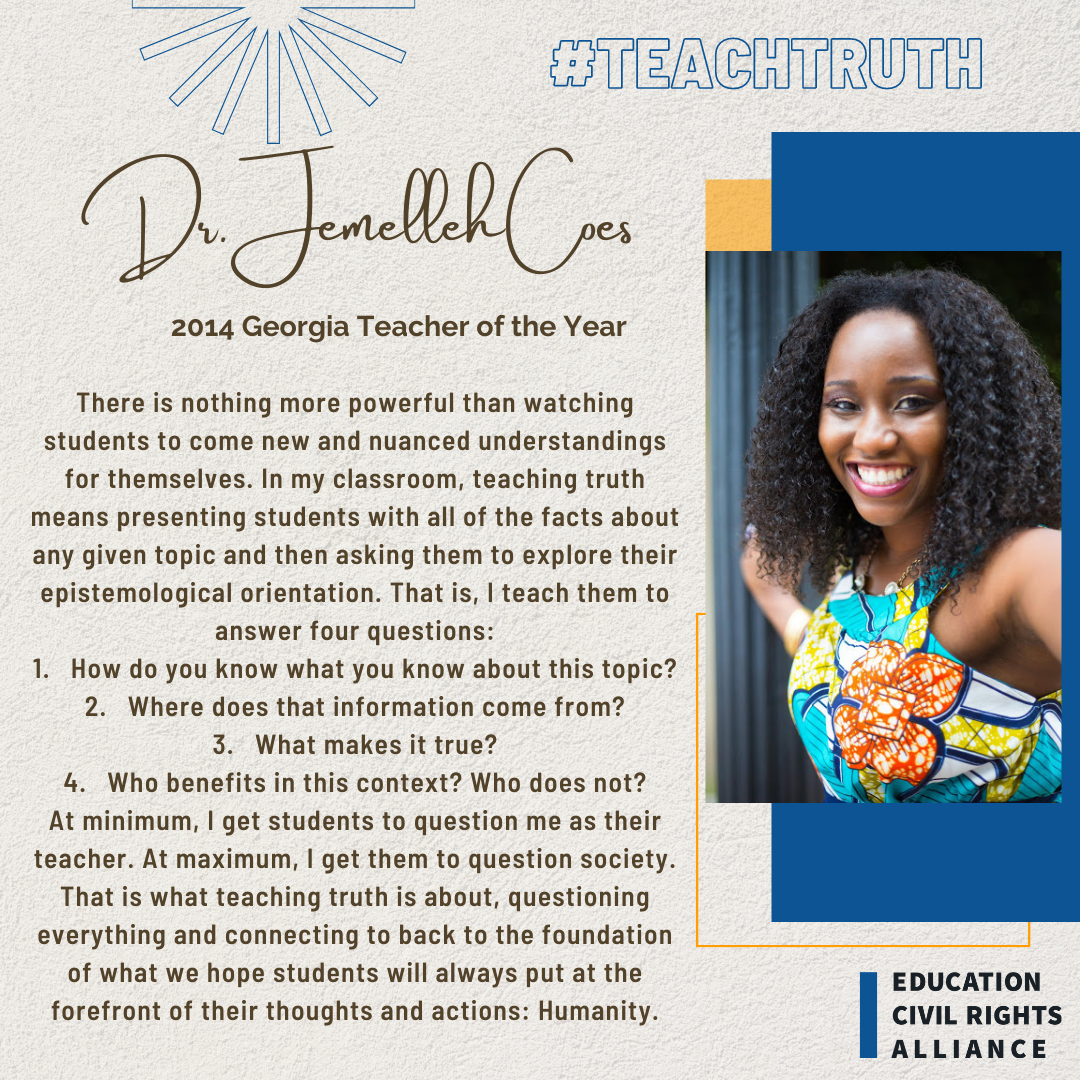 |
Dr. Jemelleh CoesIn my classroom, teaching truth means presenting students with all of the facts about any given topic and then asking them to explore their epistemological orientation.” (emphasis added). |
||
Kendria Jones“Culturally responsive education looks like a teacher who understands that everyone’s backgrounds is different. It’s a teacher meeting students where they are. Diversifying the learning environment to find activities that are geared toward core standards but will capture each student’s attention and hold them accountable for their learning.” |

|
||
 |
Neliva Johnson“Culturally responsive teaching starts with authentically getting to know your students... Teachers have to ask questions that are relevant to their student demographics. Culturally responsive teaching requires teachers to think outside of the normal paradigm. We know not all students are like, we must find those tools to reach all students.” |
||
Justin Minkel"Most of my students are first- and second- generation immigrants. Part of my work has been to make sure they see their identities and experiences reflected... there are simple steps all of us can take, like putting diverse books in the hands and homes of the young readers in our care.” |
 |
||
 |
Leigh Ann Erickson“When we build authentic relationships, identify negative narratives and change them, provide tools to step into discomfort, and hold hope closely, we empower students to be changemakers.”
|
||
Susan Tenon“The key to improving teaching and learning for all is to recognize our bias and work to overcome it through viewing diversity as an asset in our classrooms and school communities. It’s important to constantly re-evaluate my own perspective: How am I increasing a sense of belonging for all my students? How am I showing commitment to teaching all students? Like so much with education, this reflection is ongoing, but it is time well spent.” |
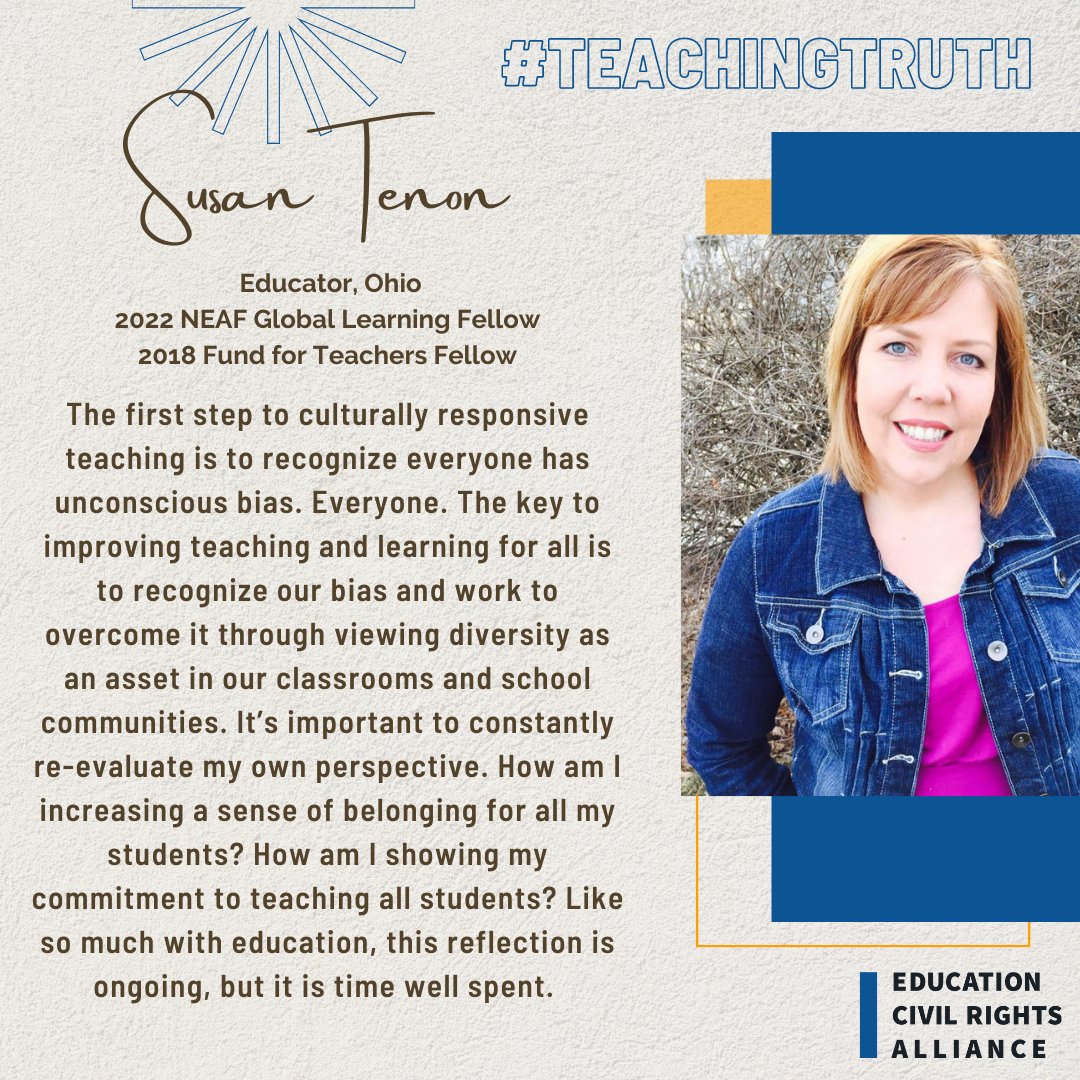
|
||
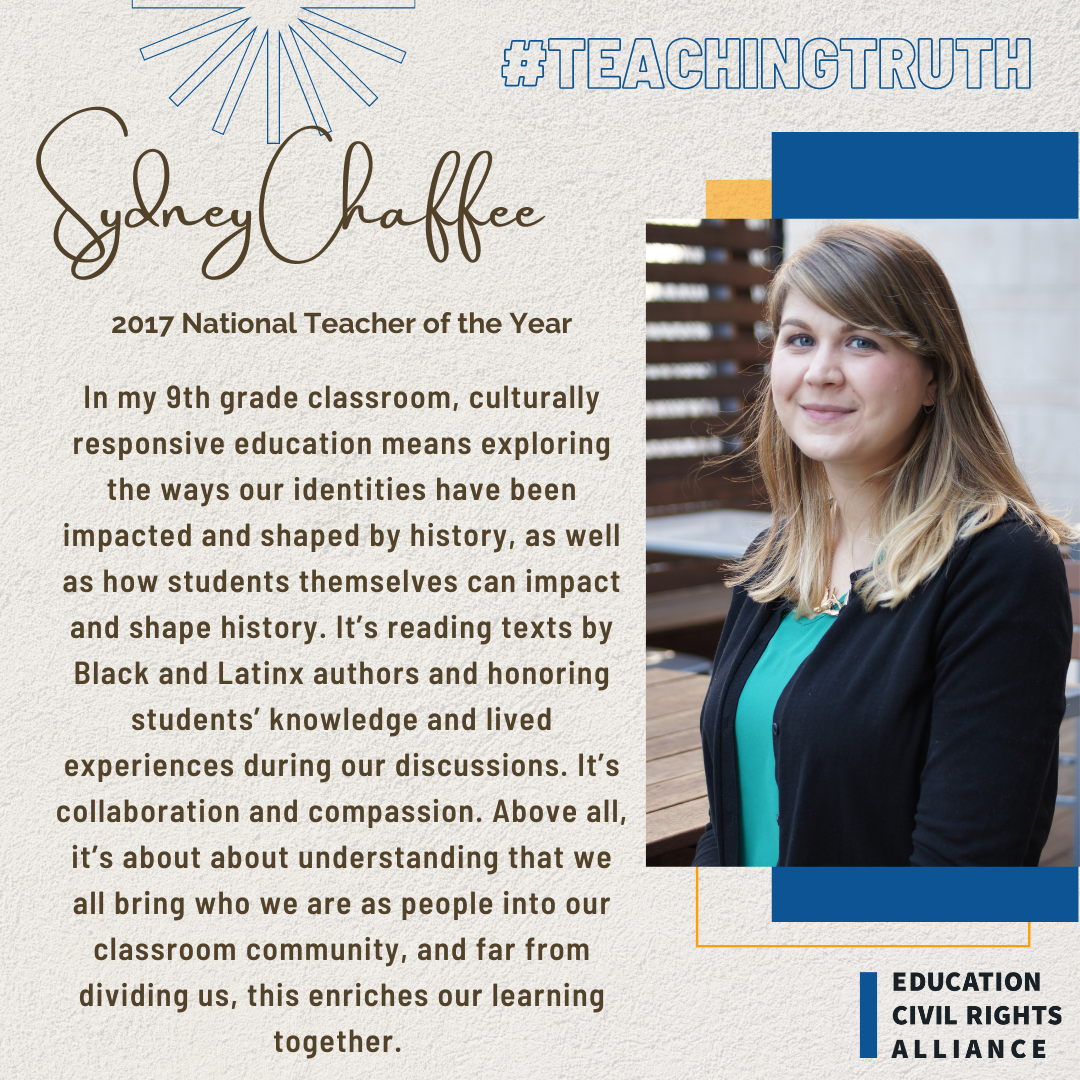 |
Sydney Chaffee“In my 9th grade classroom, culturally responsive education means exploring the ways our identities have been impacted and shaped by history, as well as how students themselves can impact and shape history. It’s reading texts by Black and Latinx authors and honoring students’ knowledge and lived experiences during out discussions…” |
||
Kristi Gregoire“Culturally responsive education in action is intentionally challenging personal norms, values, beliefs, and social practices to evaluate how these characteristics impact teaching and learning and acting on this self-reflective endeavor to ensure inclusive and equitable quality education opportunities for all learners.” |
 |
||
 |
Chanda Jefferson“They grapple with ideas, thoughts, and multiple perspectives |
||
Takeru Nagayoshi“A culturally responsive education |
 |
||
Kareem Neal
|
